20 Things You Should Know Before Traveling to Sri Lanka
Traveling to Sri Lanka for the first time? Read on for essential Sri Lanka travel tips and advice to help you plan a perfect trip!
After spending decades under the radar, Sri Lanka is ready to embrace visitors to the “Pearl of the Indian Ocean”! Since my first serendipitous trip to Sri Lanka nearly a decade ago in 2015, I have been back every 2-3 months and it is now my second home where I spend about half the year.
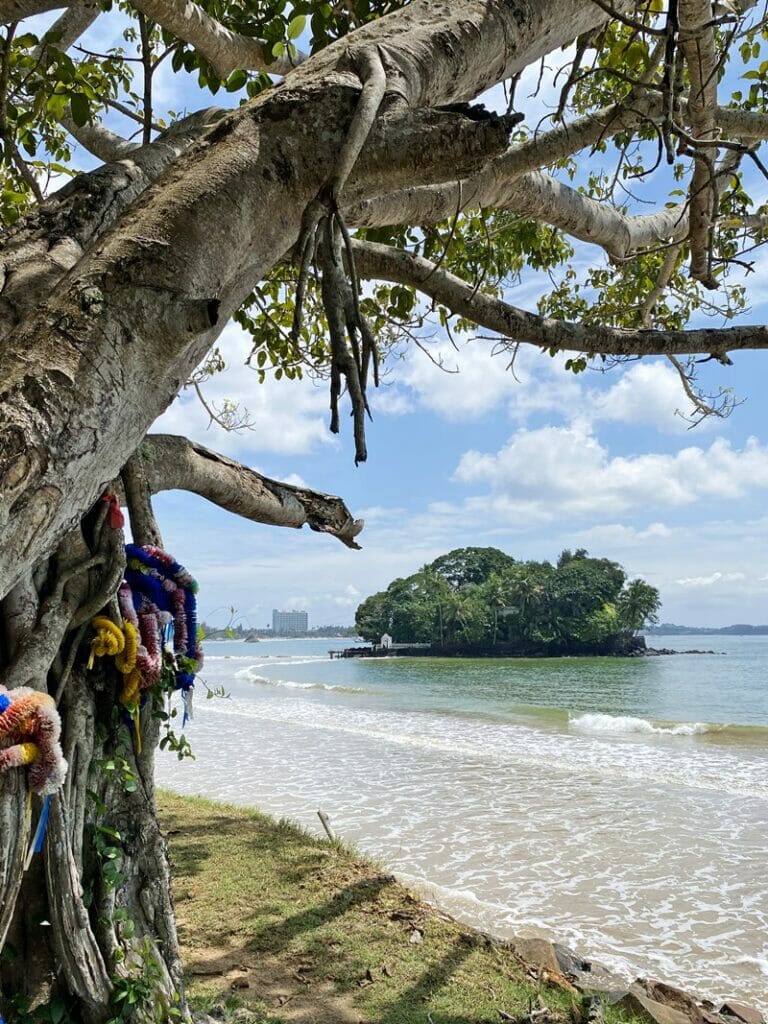
It feels like Sri Lanka’s reputation as the up-and-coming destination in Asia has truly blossomed over the past 2 years, and if for some reason you still need convincing, here are 10 excellent reasons why now is the time to see Ceylon.
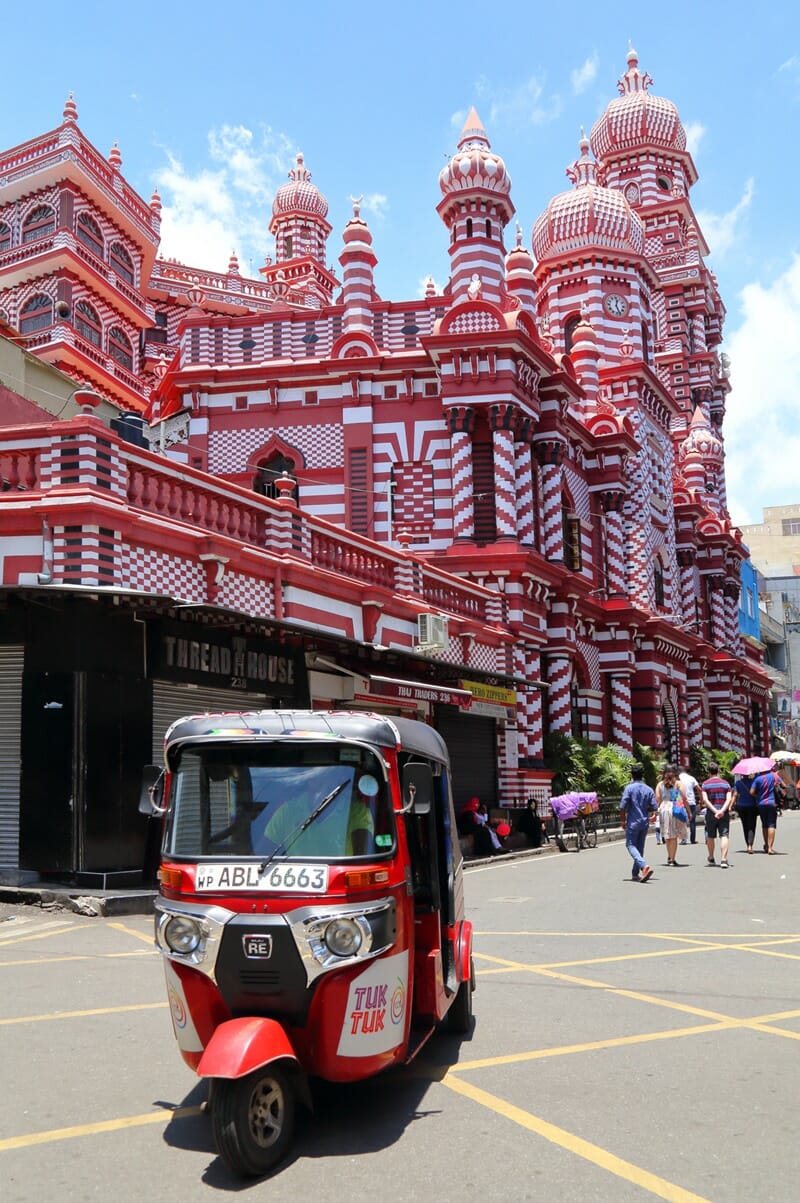
There are some common misconceptions about Sri Lanka as it underwent a civil war that raged within its borders which ended only relatively recently (2009), experienced the devastating Easter Sunday attacks in 2019 and then was later hit with an economic crisis. These events dominated news headlines around the world.
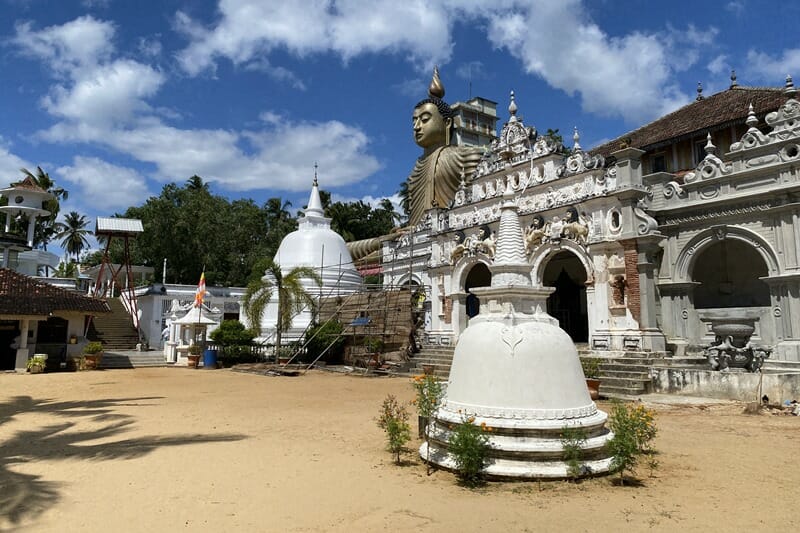
The reality is, there is a lot that people don’t know much about Sri Lanka – here are some interesting facts that you might not know about this wonderful and resilient country. If you’re planning a visit, here are 20 things to know before going to Sri Lanka!
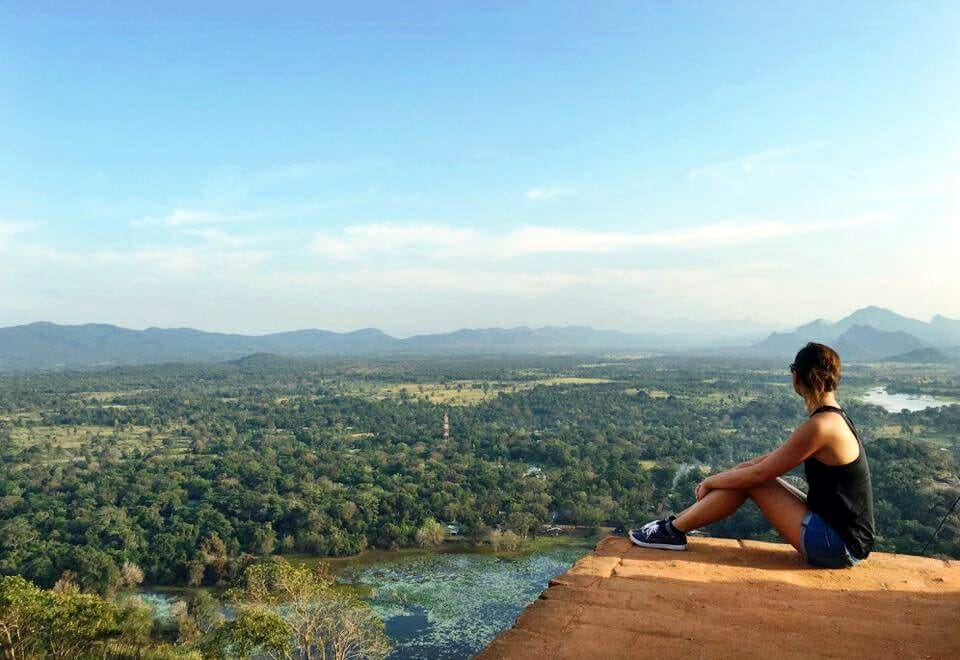
Looking for more Sri Lanka travel tips and destination guides? Click here for everything you need to help plan your trip to Sri Lanka!
Planning a trip to Sri Lanka in 2025? Read this first!
Latest update as of December 2024: Planning a trip to Sri Lanka now may require more thought and planning – do your due diligence but everyone is working hard to make sure the country is ready to welcome tourists once again. Here are some travel tips for anyone contemplating a Sri Lanka trip in 2025:
💻 Due to ongoing legal issues, the “new” Sri Lanka e-visa system (srilankaevisa.lk – launched in April 2024) was suspended in August. The government re-launched the “old” Sri Lanka ETA system located at eta.gov.lk and you should therefore use this website for your electronic travel authorization (US$50 for a 30-day tourist visa, free for children under 12). Visas are also available on arrival at the airport. It was also announced that there would be a visa waiver program for nationals of 30+ countries from October 2024 to April 2025 but this has not actually been formally approved/implemented – I will update as we know more.
💵 Due to the currency devaluation you will notice that prices for goods and services have gone up compared to a few years ago – however, the dollar-amounts remain approximately the same. As a tourist, you can exchange foreign currency at the airport upon landing so that you have some cash in hand.
🥥 Local supermarkets are full of fresh produce – albeit more expensive now. Roadside market stalls also have lots of fresh fruit and vegetables on offer. Restaurants in the south coast of Sri Lanka have all mostly reopened as of November 2024 for the upcoming peak season which begins in approximately November/December.
💡 Compared to June 2023 when there were twice-daily 1-1.5 hour long scheduled power cuts in the south coast, power cuts are currently few and far between. That’s not to say there are zero outages – even before the economic crisis it was not uncommon for the power to cut out occasionally. In general, larger hotel chains and boutique hotels should have generators to provide uninterrupted power supply, but smaller hotels and guesthouses may not have consistent access to diesel to run their generators.
⛽️ There are no fuel lines but somewhat limited supply still, but the QR code system is no longer required. Tuk tuks, buses and trains are running.
💊 The economic crisis has led to a shortage in medicine, cooking gas and petrol/diesel. We brought along lots of medication just in case, but have had no issues purchasing standard over-the counter-meds like Panadol. Visitors who have certain medical supply needs should plan accordingly as it may not be possible to purchase required medication in Sri Lanka. Hospitals are open and we have not had long waits at private hospitals to see a GP.
🚫 Most countries have lifted travel advisories against traveling to Sri Lanka. However, it is prudent to check directly with your country’s foreign office on their advice, and ensure that your travel insurance is valid. The political tensions have eased, but public demonstrations may continue to take place from time to time in major cities.
Long story short, I highly recommend that you read through all of the materials carefully as there are a number of restrictions in place that you should be aware of before traveling to Sri Lanka, and the regulations change quickly (sometimes faster than they can even update the website). Snap lockdowns, curfews, interprovincial travel restrictions and last-minute closure of tourist sites may be implemented. The situation and rules may change quickly and without warning.
Read the full article here: Is It Safe to Travel to Sri Lanka Right Now? All Your Questions Answered About Sri Lanka Travel Safety (2025)
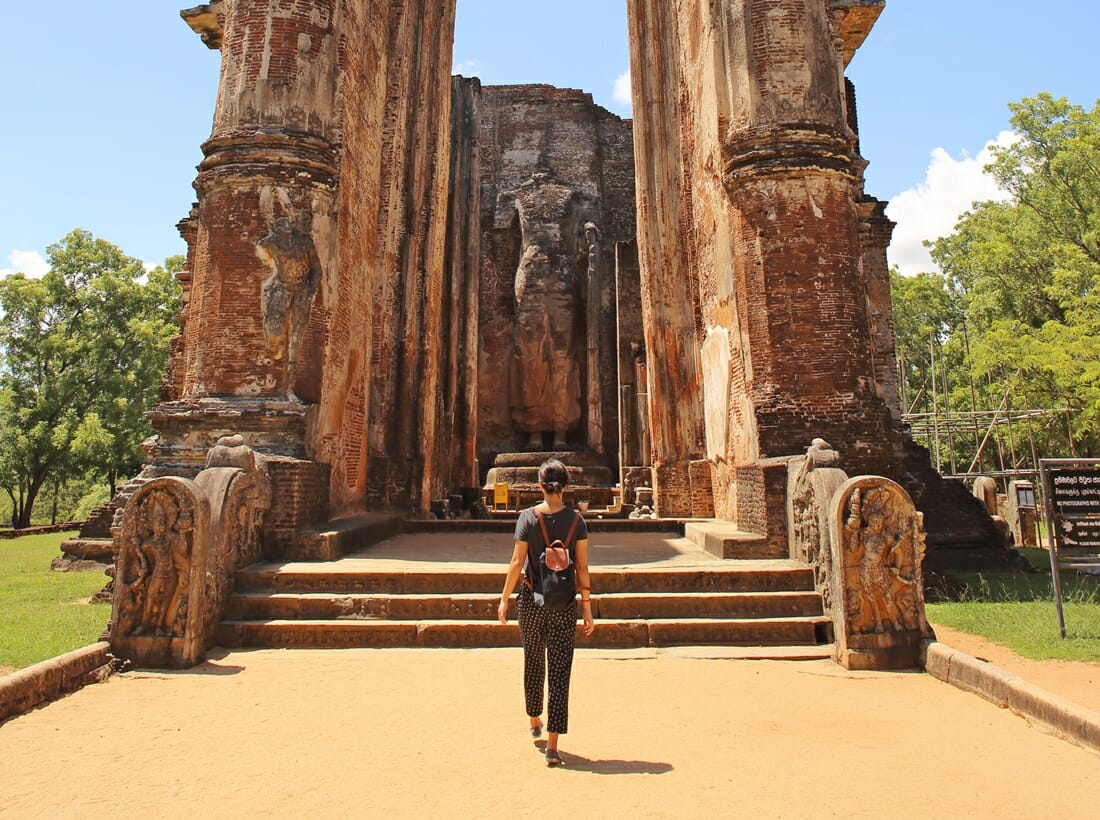
1. It is time consuming to travel around Sri Lanka
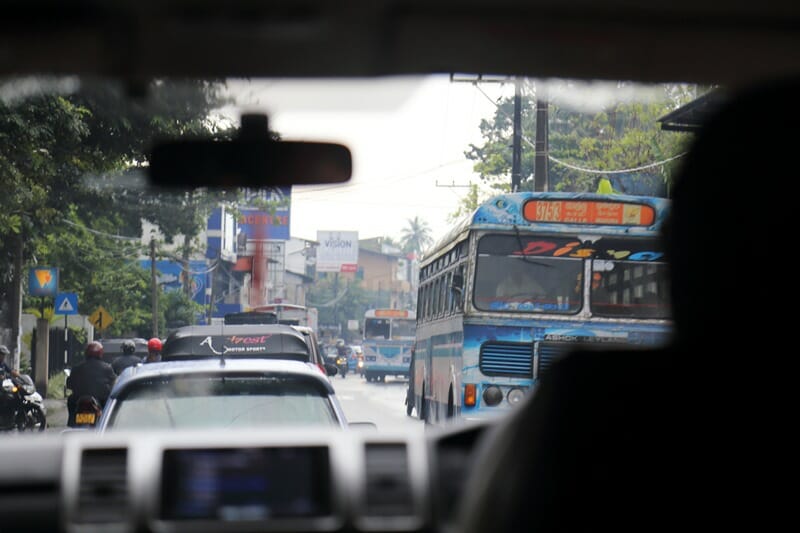
One of the most important things you should know before visiting Sri Lanka is that the island is only about 430 KM tall and 220 KM wide (about the same size as Tasmania in Australia or Lithuania), and while it may only look like a speck on the world map but it can take you hours and hours to travel from A to B as the roads can be extremely busy, especially along the coastal belts.
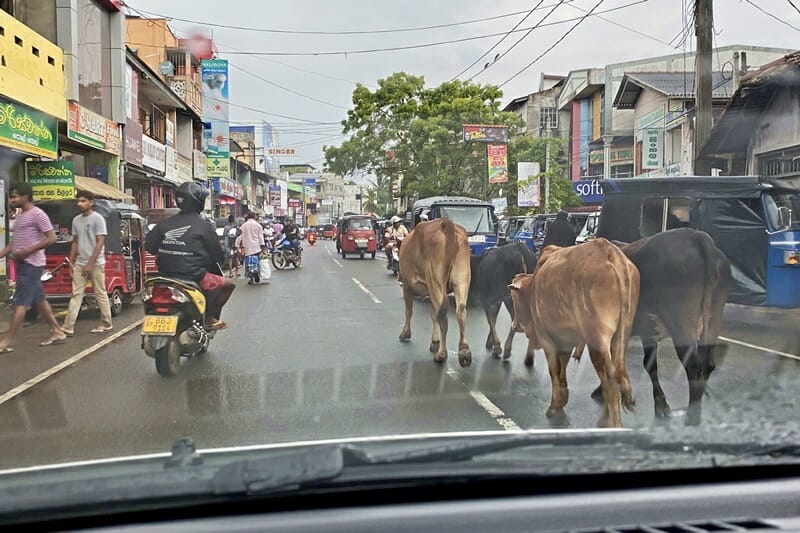
Expect to wait for herds of cows and buffalo to cross the road, the occasional monkey and stray dog belting through traffic, crazy bus drivers who overtake on blind corners and are constantly at risk of head-on collisions (we’ve sadly witnessed multiple!) and sometimes even a stubborn elephant in the middle of the road.
For example, while it might not look like a long distance, it takes approximately 3 hours to travel from Colombo to the southernmost point of Sri Lanka (around 160 KMs) if you take the Southern Expressway, and it could take you up to 5 hours if you take the scenic, coastal route.
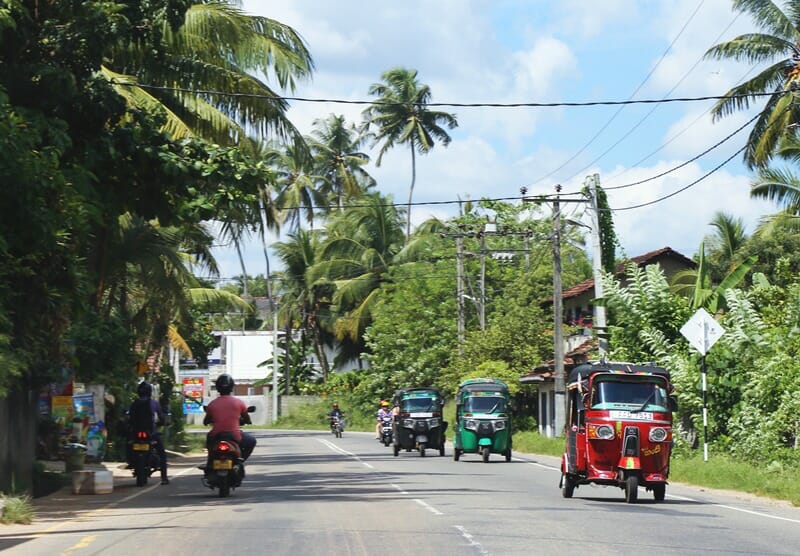
The good news is that highways are being built left, right and center to improve road connectivity around the country, but you will still have to drive through narrow streets in smaller cities and sleepy towns to get to freeway entrances. According to the IMF, Sri Lanka has some of the slowest roads in the world – the average speed is just 50 KM/hour.
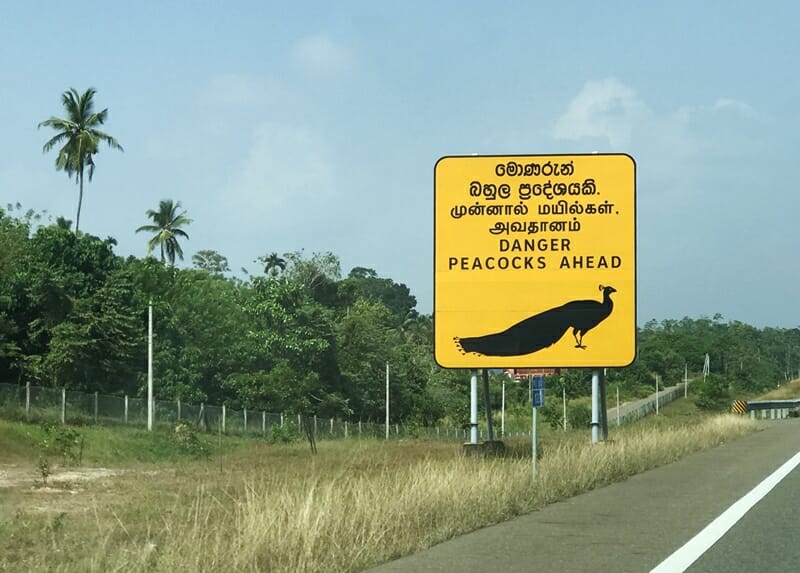
First timers to Sri Lanka often make the mistake of packing too many places into a 1 or 2 week itinerary without factoring in extensive travel time. My best advice to someone planning a trip to Sri Lanka would be to select just a handful of the top highlights of Sri Lanka so that you don’t spend all of your time seeing the country from a car window.
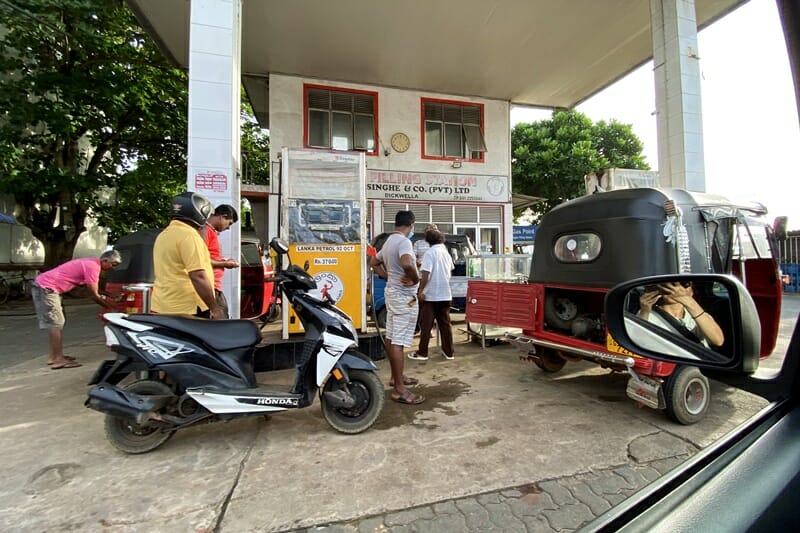
The fastest and most efficient way to travel around Sri Lanka is to book a private car and driver from point-to-point (you can do this easily via your hotel), but do not expect the prices to be dirt cheap as fuel prices are not significant lower than elsewhere in the world, and the standard of living and wages is fairly high.
You can shop around between different transportation providers but a 3-4 hour one-way car ride can cost anywhere from US$100 to $140. Hiring a car and driving around yourself is uncommon in Sri Lanka and oftentimes the police may ask you to present a special license that has to be acquired in Colombo (and different from an International Driver’s Permit) – without the proper credentials your travel insurance may not cover any expenses in the event of an accident. You could probably find car rental places in Colombo, but your best bet is to hire a driver to traverse the country.
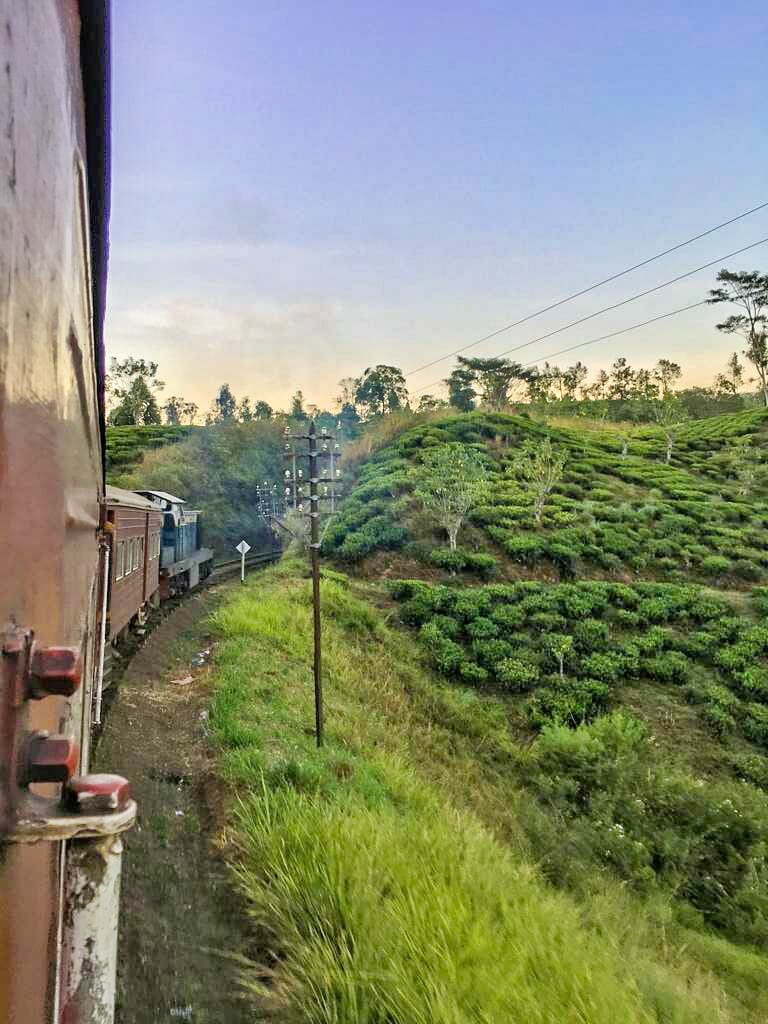
Train travel is popular in Sri Lanka as it is cheap and reliable(ish), with routes that connect most popular tourist destinations in Sri Lanka. However, not every train has first or even second class carriages, and while seats can be reserved in person at a train station up to 45 days before the trip or online using this new Sri Lanka train booking website you should know that scenic routes fill up FAST.
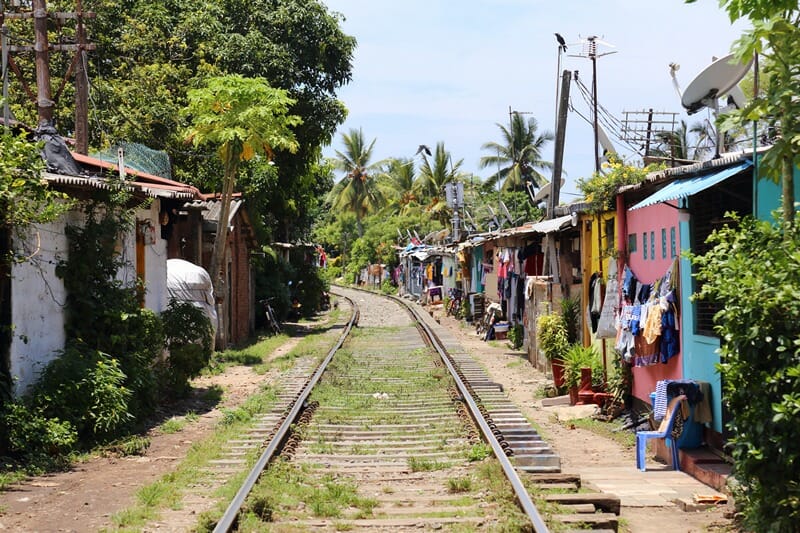
Here is one of my best tips for visiting Sri Lanka: don’t have your heart set on riding in first class on a train in Sri Lanka, because the action and best views are often from the second and third class carriages!
Traveling by train in Sri Lanka is an incredibly cost-effective and picturesque way to get around, and many people believe it’s an integral part of the overall Ceylon travel experience. Click here to read more tips on train travel through tea country in Sri Lanka!
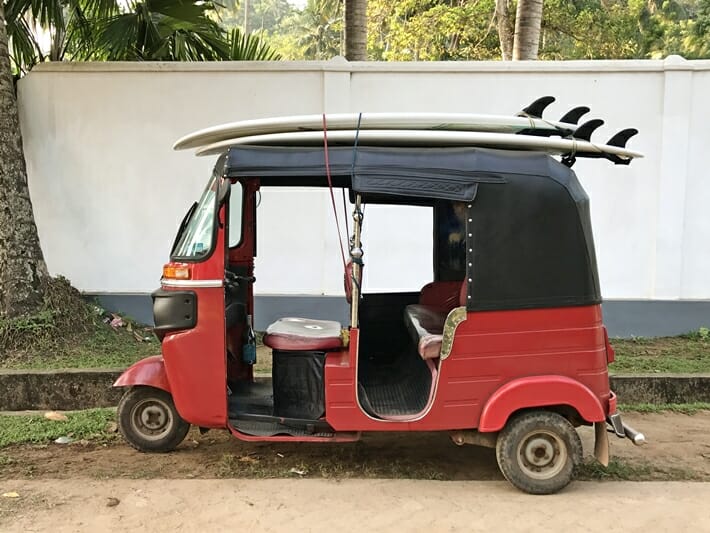
Traveling around by bus is also dirt cheap, but not highly recommended because they drive like absolute mad men! If you are traveling a short distance (under an hour) then a tuk tuk, or 3 wheeler, is the way to go. Riding in a tuk tuk is an experience in and of itself – just make sure you agree on a price with the driver before the ride.
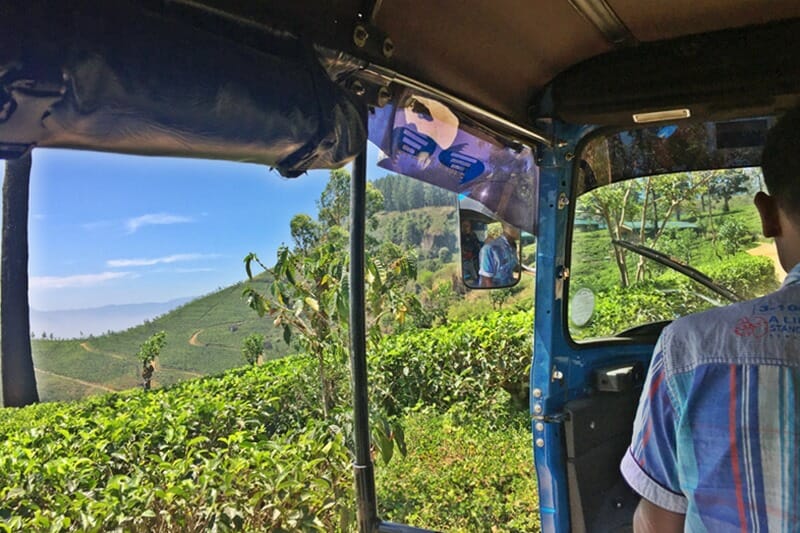
In recent years it has also become fairly common for people to rent a tuk tuk to drive around Sri Lanka, however I would recommend that you consider whether this is right for you – tuk tuks can be very uncomfortable for long journeys and do not have much room for luggage, they are also not allowed on expressways which means drive times will be longer than necessary. I do not recommend renting your own tuk tuk if it is your first time to Sri Lanka and you are not familiar with the roads and (often insane) driving conditions.
2. For a small island, there are a ton of things to see and do in Sri Lanka
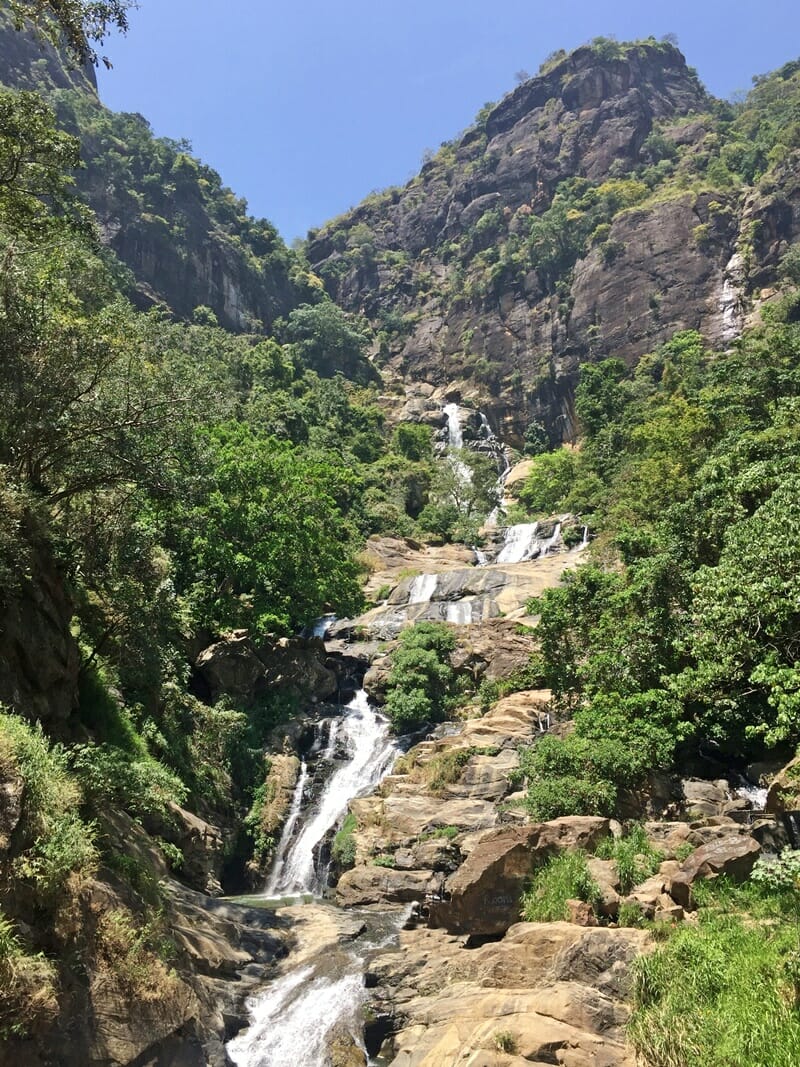
Don’t let its size fool you…Sri Lanka has every single type of traveler covered: explore tea country in the highlands of the Central Province; chase waterfalls; hike stunning mountain ranges; discover UNESCO world heritage sites like Sigiriya and the ancient cities of Polonnaruwa and Anuradhapura; lounge on world-class beaches; go on a wildlife safari in one of Sri Lanka’s many national parks like Yala or Udawalawe to see leopards and Asian elephants in their natural habitat; dive among crumbling shipwrecks; surf uncrowded waves; visit temples and so on…you get the gist!
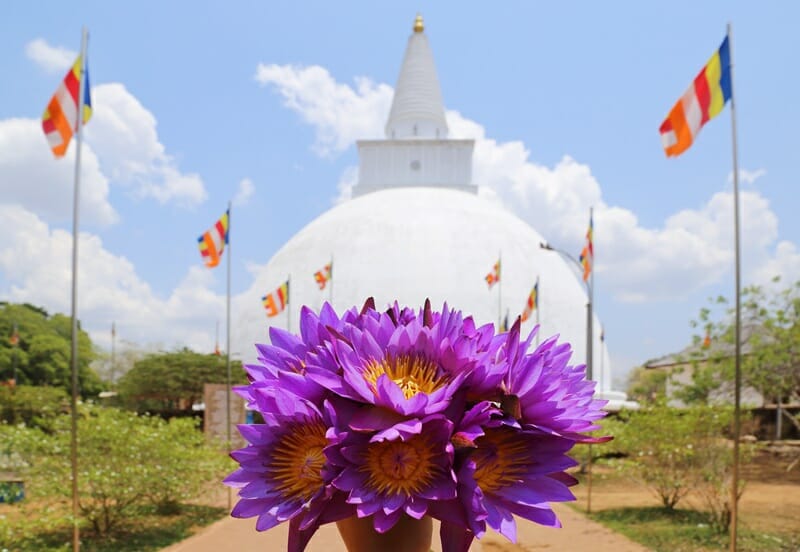
Because of the time it takes to travel between places, don’t be surprised if you don’t cover a lot of ground – 2-3 weeks is not nearly enough time to experience all of what Sri Lanka has to offer and you’ll be yearning to go back time and time again to explore more of the country.
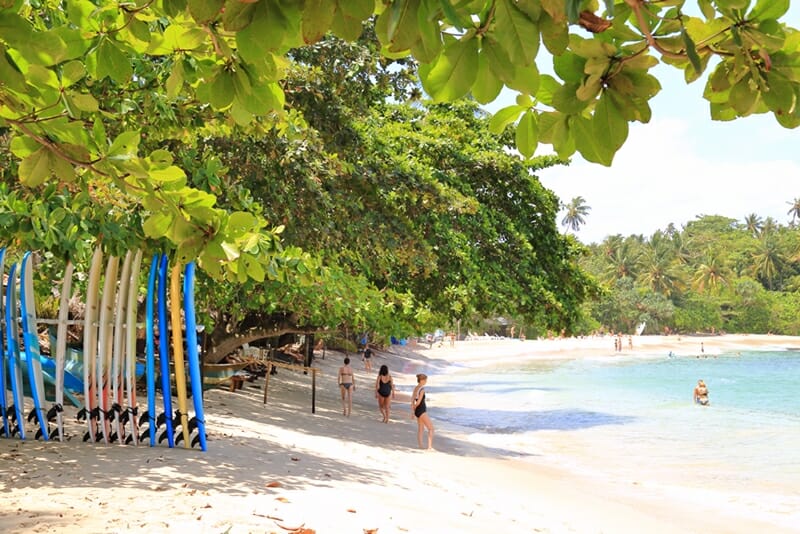
Read on for some of the top destinations to visit in Sri Lanka, read my express 1 week Sri Lanka itinerary for first-time visitors or head on over to read my extended 2 week itinerary to the Pearl of the Indian Ocean!
3. Sri Lanka is a safe country to travel to…
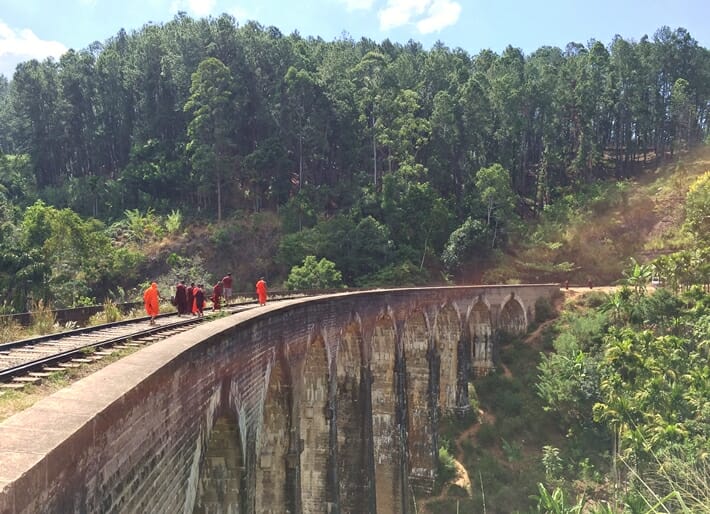
But there are a few things you should know regarding safety and security before traveling to Sri Lanka. Yes, the country went through a 20 year civil war, but for the most part, life has since returned to some semblance of normality after the end of the war in 2009.
Sri Lanka has made international news headlines a few times since the end of the war: a 10-day state of emergency was declared in March 2018 due to violent unrest between the Buddhist and Muslim communities in Kandy; political unrest and protests took place in late 2018; and hotels and churches in Colombo, Batticaloa and Negombo were attacked on Easter Sunday in 2019.
Most recently in 2022, the country has undergone a massive economic crisis resulting in a shortage of fuel, medicine and food. The currency was devalued overnight, and many Sri Lankan people have taken to the streets to protest for their livelihoods.
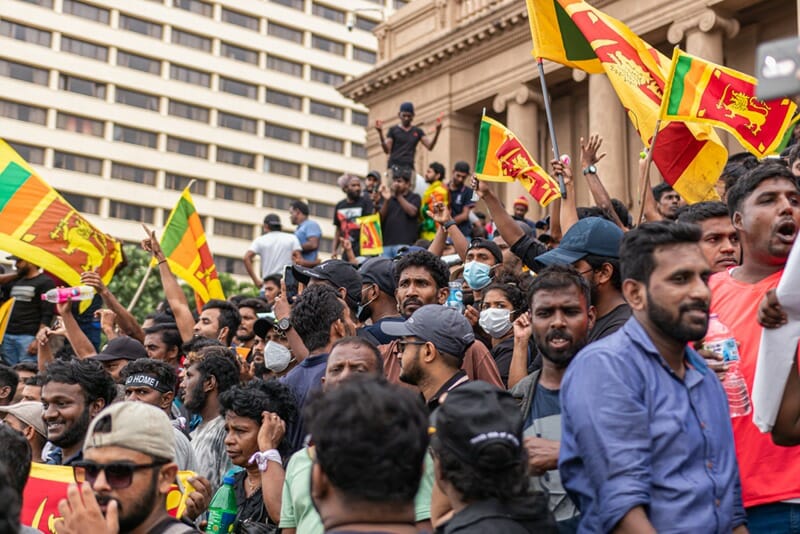
The majority of the protests were peaceful – however some deteriorated into violence and snap curfews have been implemented (and may continue to be implemented). Here’s my take: over 2 million people are dependent on the tourism industry. As a small tourism business owner in Sri Lanka, it has been an uphill battle – first the devastating bombings, then the pandemic hit.
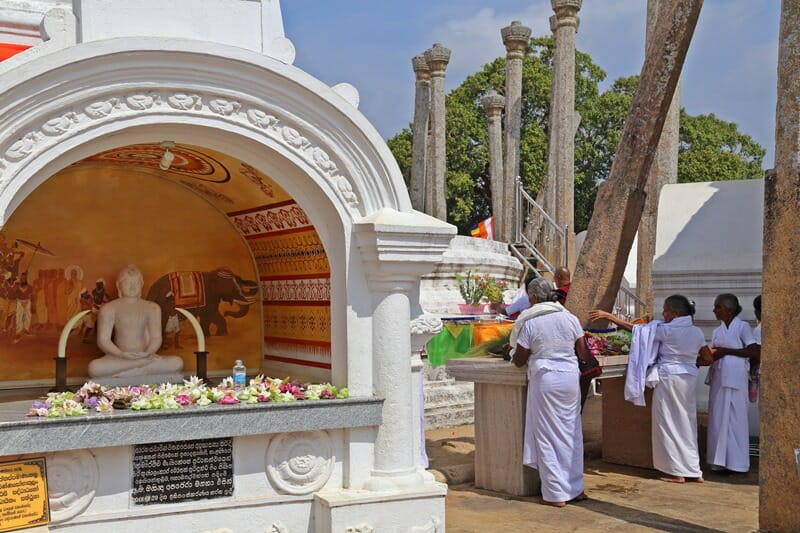
Is tourism the solution? It isn’t going to fix things overnight, no. But it is a short-term lifeline to many small businesses around the island. As of 2023, you will likely experience some inconveniences during your trip to Sri Lanka. It won’t feel the same as when you are visiting in “normal” times. So, “is it still safe to visit Sri Lanka?“
Ultimately, the decision to travel to and around Sri Lanka is yours, and may require a change in mindset and expectations. Everyone’s comfort level with risk is different. Be understanding of the situation in Sri Lanka – many people rely heavily on tourism dollars and will welcome you with open arms. It may not be the right destination for every traveler at this very moment.
However, I do encourage you to check with your country’s foreign office on the latest travel advisory status; contact your travel insurance provider to enquire about coverage; and stay informed by keeping a close eye on the news – the BBC, Reuters and Associated Press tend to be reliable and timely news sources. I also regularly update this Sri Lanka travel safety guide with my personal experiences and observations from each trip back.
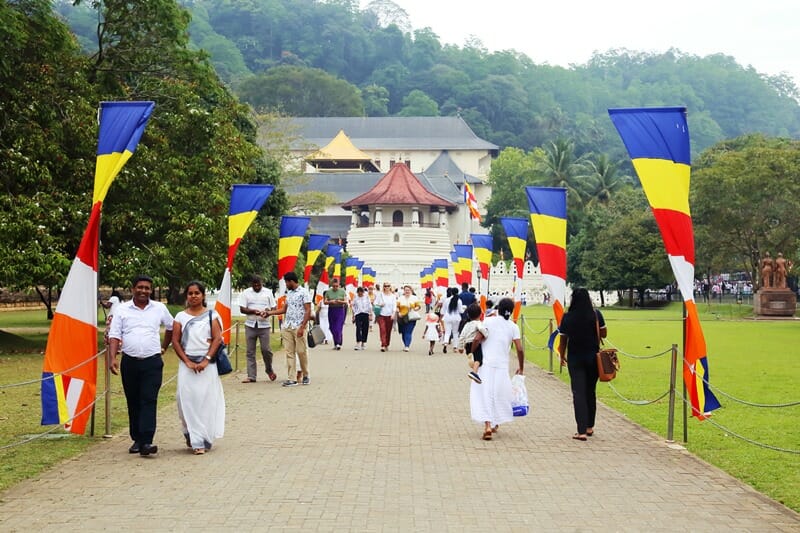
Just as you would for any other country that you travel to, exercise a reasonable amount of caution and be aware of your surroundings. It may also be prudent to avoid large, crowded gatherings and places of worship during major religious holidays such as the Sinhalese New Year or Tamil New Year (mid-April), Vesak Day to celebrate Buddha’s birthday (first full moon in May), Easter or Christmas.
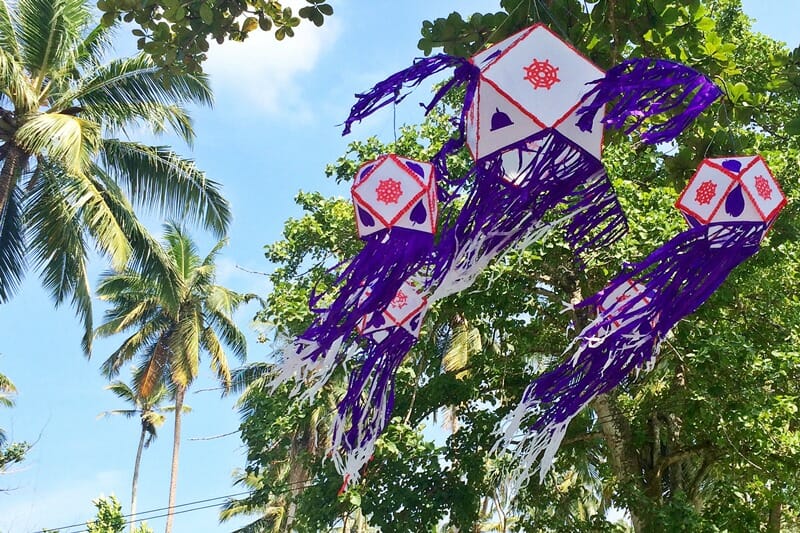
It also makes sense not to flash money around and leave expensive jewelry and electronics in your hotel room or at home, and keep a close eye on your personal belongings when you head out. Sri Lankan people are famous for their hospitality, and violent crimes towards tourists are virtually unheard of. I have met some of the kindest and most welcoming people in Sri Lanka.
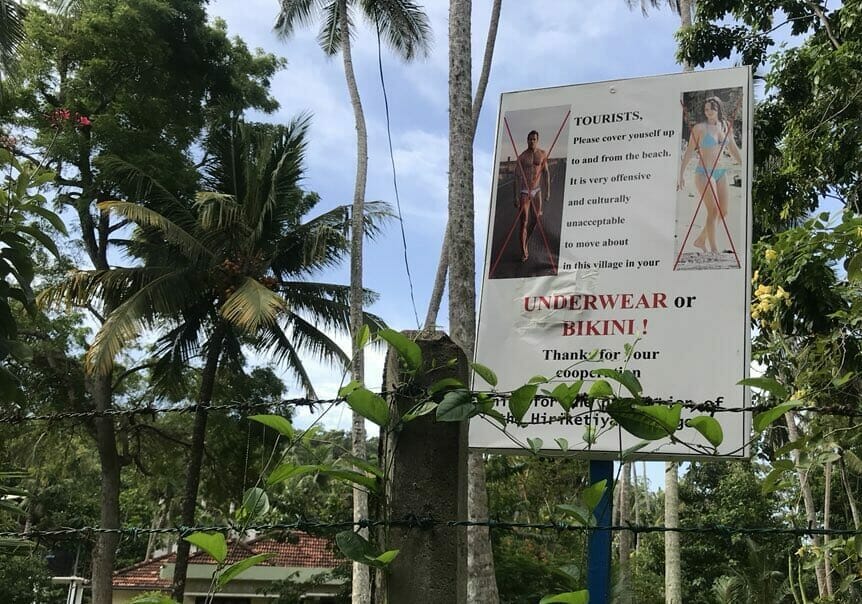
One of the most important things to know about Sri Lanka is that Sri Lanka is unlike some other Asian countries in the sense that it is still relatively modest, despite being a popular beach destination in the region. The primary religion is Buddhism so be mindful of your attire when you visit temples (cover your shoulders and wear pants) or walk around town.
Let me put it this way: shorts and tank tops are fine, but I would not recommend that you drive shirtless on a scooter or walk around in a bikini – some tourists are even being stopped by police in the street and told to cover up!
Looking for more tips on what NOT to do in Sri Lanka? Click here for 15 things to avoid doing in Sri lanka!
Another thing you should also know about visiting Sri Lanka is that every full moon is a public holiday in Sri Lanka (also referred to as “Poya”) and hard liquor consumption is fairly high during this time. Though places (including 5-star hotels) do not sell alcohol on Poya day, many people stock up from their local liquor shop ahead of time.
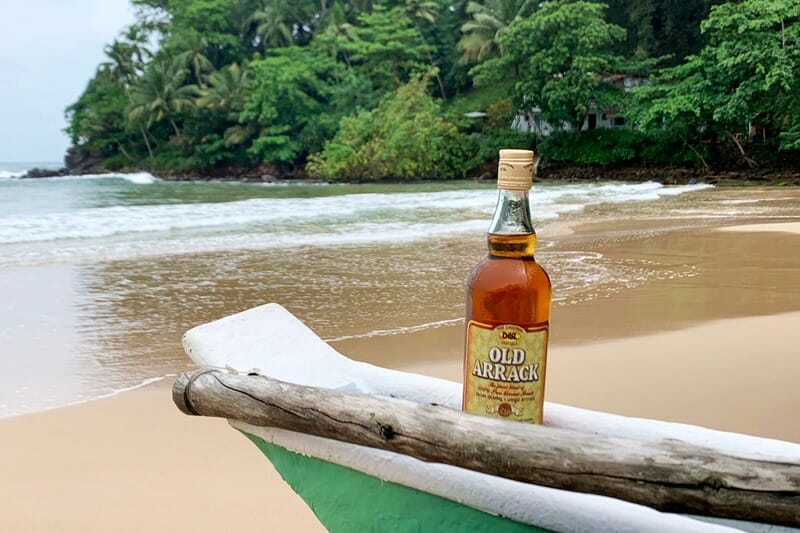
The preferred drink of choice tends to be arrack (most often distilled from coconut flower sap) which is high in alcohol content – it is not uncommon for groups of men to get intoxicated and rowdy on beaches or in town during Poya.
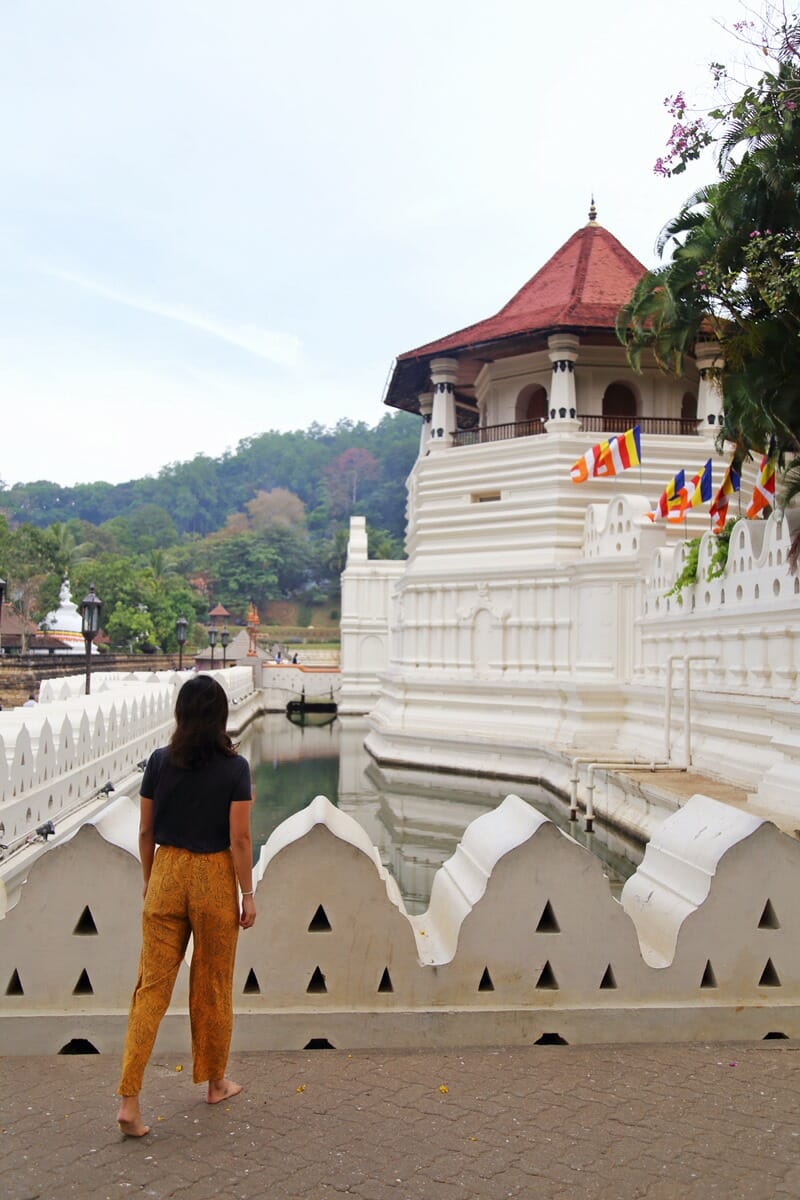
Traveling to Sri Lanka as a solo female traveler? I have personally experienced verbal harassment and lewd comments from men in Sri Lanka, but would not recommend engaging or responding – if you are a solo female traveler in Sri Lanka, just keep walking, avoid eye contact and try not to be alone late at night.
You should try to arrange the majority of your local and intercity transportation via your hotel, and always keep friends and family at home up-to-date with your whereabouts and how to get in touch with you. Sri Lanka’s tourist police are very responsive and any incidents should be reported to them promptly – dial 1912 to get in touch with them, or 119 to reach emergency services.
Looking for more top tips for solo female travel in Sri Lanka? Here is everything I can share from my years of travel to this gorgeous island.
4. Traveling around Sri Lanka is affordable…
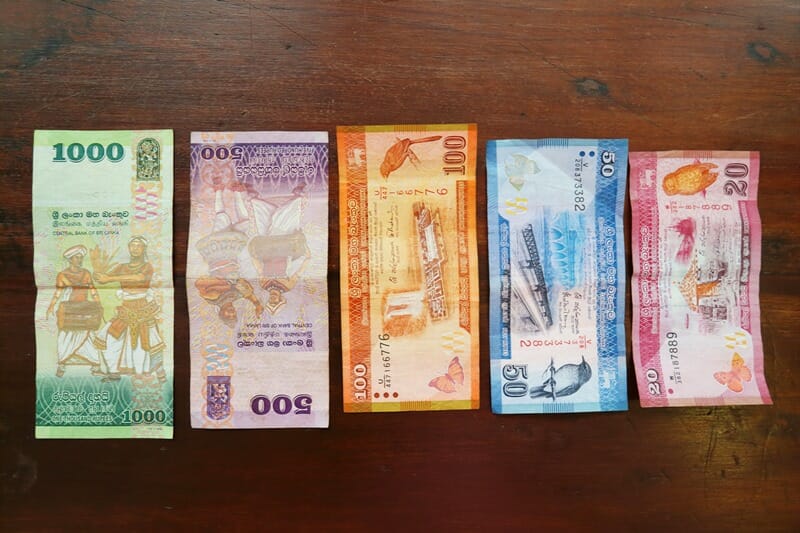
…but not necessarily as cheap as other Southeast/South Asian countries, especially if you are staying in boutique or luxury accommodation. The currency is the Sri Lankan Rupee (different from the Indian Rupee), and the exchange rate usually varies from approximately US$1/Euro to 175-185 LKR (now closer to 305-330 due to the post-pandemic economic downturn and consequent devaluing of its currency). There are plenty of places to exchange money in Sri Lanka, and there are also ATMs in cities like Colombo and Galle where you can withdraw money.
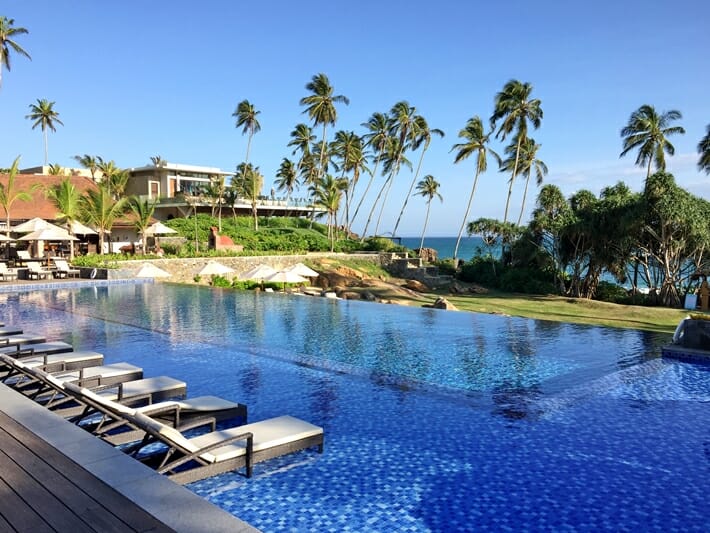
In my experience, accommodation prices (as well as the cost of living in general) tend to be higher in Sri Lanka when compared with countries like India, Vietnam, Thailand, Indonesia, Laos and so on.
Luxury properties like Shangri-La’s Hambantota Resort, Anantara Tangalle, Anantara Kalutara and Madulkelle Tea & Eco Lodge are popping up like daisies across the country and a 5-star or boutique hotel can cost anywhere from US$300 to $1000 a night – seriously! On a budget? Not to worry – you can eat at local restaurants and indulge in all of the street food and fresh produce.
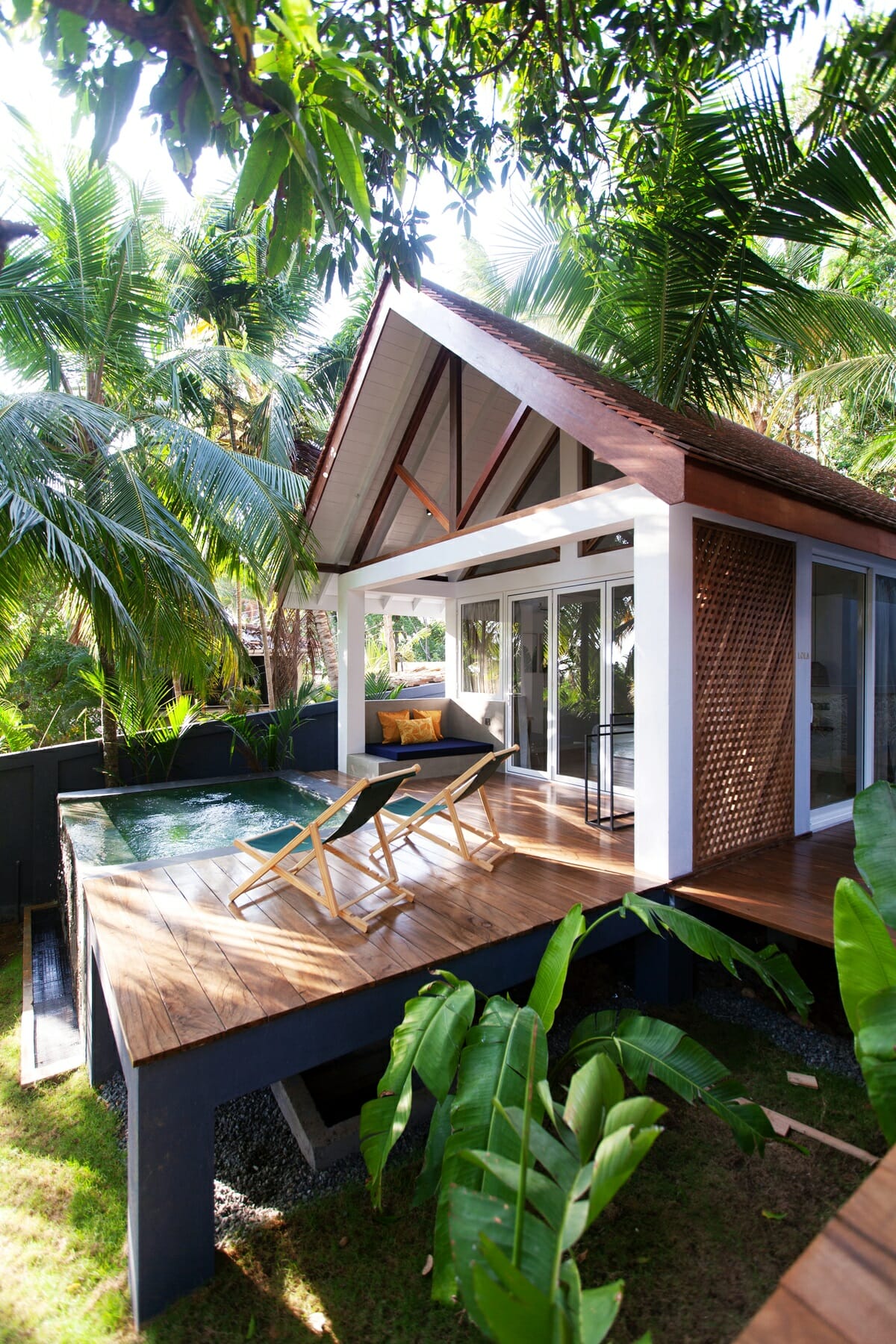
It is also not uncommon for a 3-star hotel to set you back US$80-120 a night, especially when you are visiting popular tourism towns in Sri Lanka, but budget options are available. I’m passionate about promoting unique and boutique travel experiences, and personally look for comfort, beautiful decor and warm hospitality when I travel. Not sure where to stay during your visit? Click here for some of the best boutique and luxury hotels to stay at in Sri Lanka!
Planning a trip to Sri Lanka? Click here for more accommodation options! If your dates or plans might change, the majority of the hotels listed on Booking.com allow you to cancel your booking for free! Just make sure you know what the deadline is for cancelling with no penalty.
5. Sri Lanka has 2 monsoon seasons and a number of different climates throughout the country
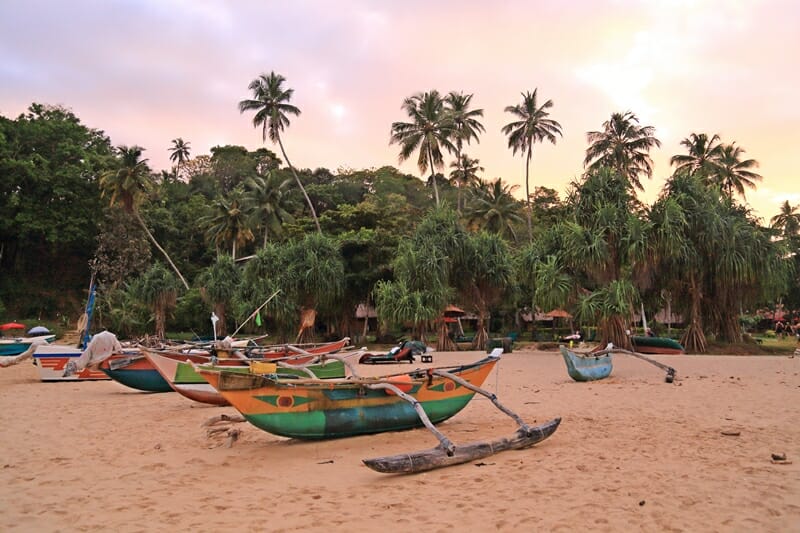
I’m often asked, “when is the best time to visit Sri Lanka?” Sri Lanka is a tropical country so expect lots of blissful sunshine and blue skies practically year-round. If we’re being technical, the island has 2 monsoon seasons: the northeast monsoon (December to March), and the southwest monsoon (June to October); however, you can visit Sri Lanka anytime during the year in my humble opinion.
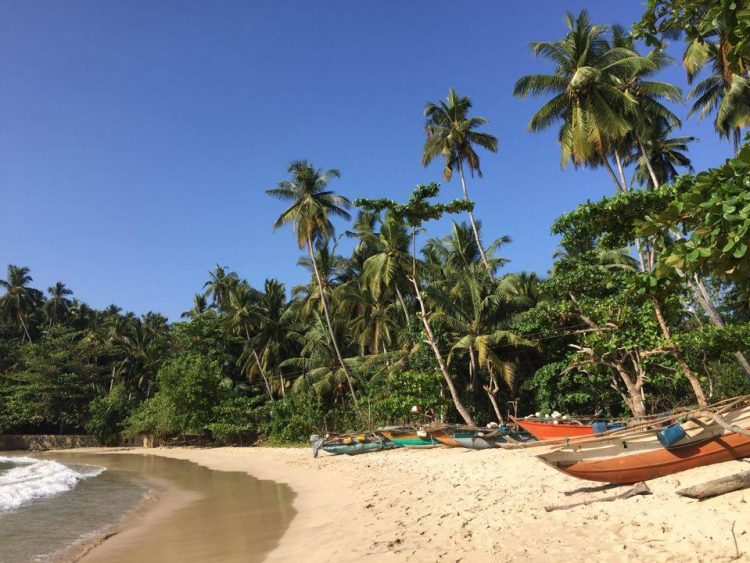
While there are “rainy seasons”, it is nowhere near as unbearable as rainy season in Laos or Thailand, often it will pour in the evening and the sun will be out the next day. We like to joke that the most accurate way to forecast the weather in Sri Lanka is by looking out the window.
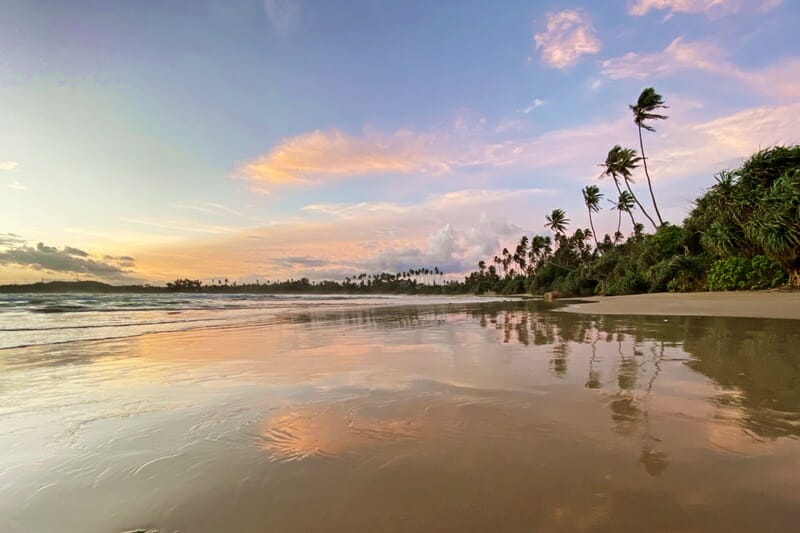
People love to say that you shouldn’t visit Sri Lanka during “rainy season”, but it’s a bit of a sham in my opinion – don’t let people talk you out of visiting southern Sri Lanka from June to September as it tends to be much quieter and crowd-free. There are usually always some windows of blue skies and sunshine at some point during the day. Check out my guide to Sri Lanka’s south coast for more insider tips!
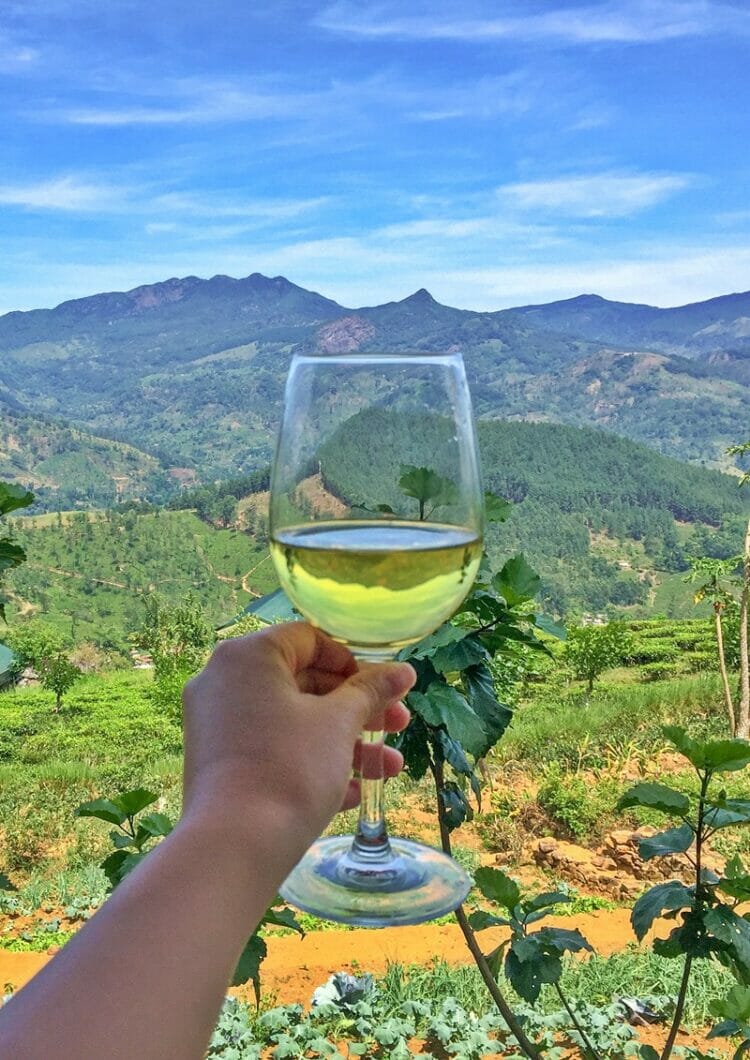
For your reference, the peak season for the southern province is from around November to January (be mentally prepared for significant crowds if you are visiting Sri Lanka in December around Christmas or New Year’s Eve), and the peak season for the east coast (including Arugam Bay) is from around June to August. You can visit the central highlands and destinations like Ella all year round, but it typically tends to receive most of its rainfall between September and November.
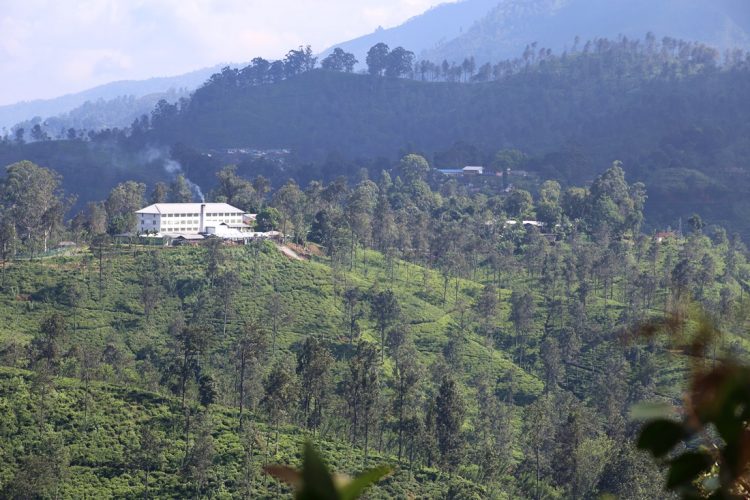
You should also know that Sri Lanka has a few different climates so you may need to bring a sweatshirt or two if you’re visiting hill country as it can get very chilly. When we have traveled through Nuwara Eliya, Kandy and Ella in the past, the temperature often drops to 14-17 degrees Celsius (57-62 Fahrenheit) in the mornings and evenings – not quite what you expect from a tropical island!
6. Many Sri Lankans can communicate in English
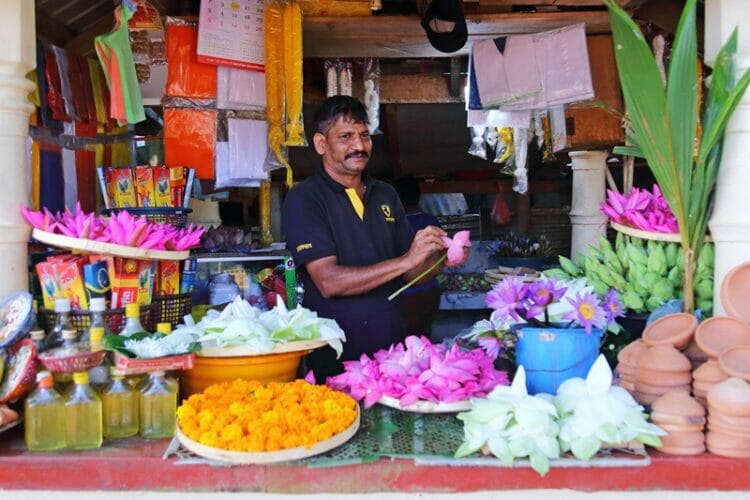
Sinhalese and Tamil are the two primary languages spoken in Sri Lanka, but I’ve personally found that many people also speak or understand basic English. Most people who work in, or live around, major tourist destination cities like Galle, Mirissa, Weligama, Unawatuna, Colombo and Kandy will be able to communicate in conversational English.
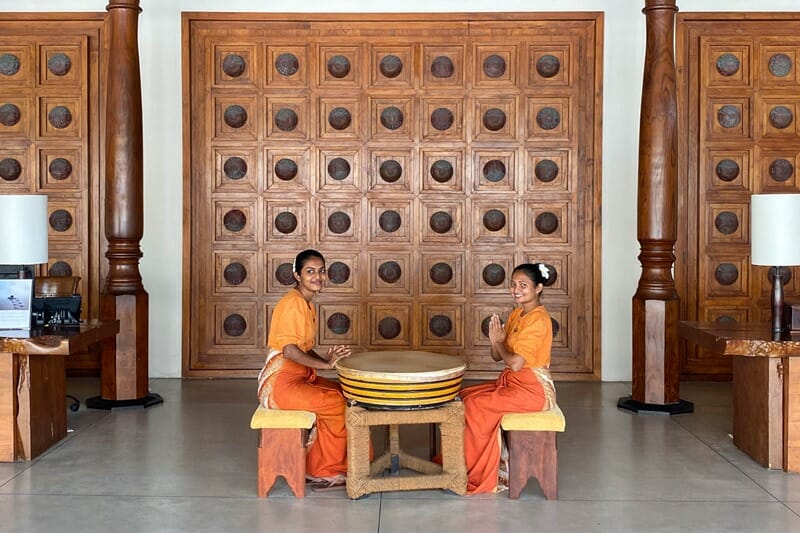
Here are some useful phrases you should know before you go:
- Ayubowan = may you live long, a formal way of greeting someone. You can also just say “hello” or “hi”
- Istuti = thank you
- Kohomadha = how are you?
- Hari = okay, got it, fine (you often say this twice – “hari hari”)
- Lassanai = beautiful
- Hondayi = very good
- Kiyeda? = how much?
While there may be a minimal language barrier, there are unique Sri Lankan cultural characteristics when it comes to communication that you might want to bear in mind. Generally, Sri Lankans are very polite when they speak, and may be ambiguous or indirect in an attempt to avoid any conflict or disappointment.
People may try to “save face” and tell you yes when they actually mean “maybe” or “no”, and it is not uncommon for someone to stop responding entirely. You may need to ask the same question in several ways and read between the lines. Read more about Sri Lankan communication styles here and here.
7. It is relatively uncrowded…for now
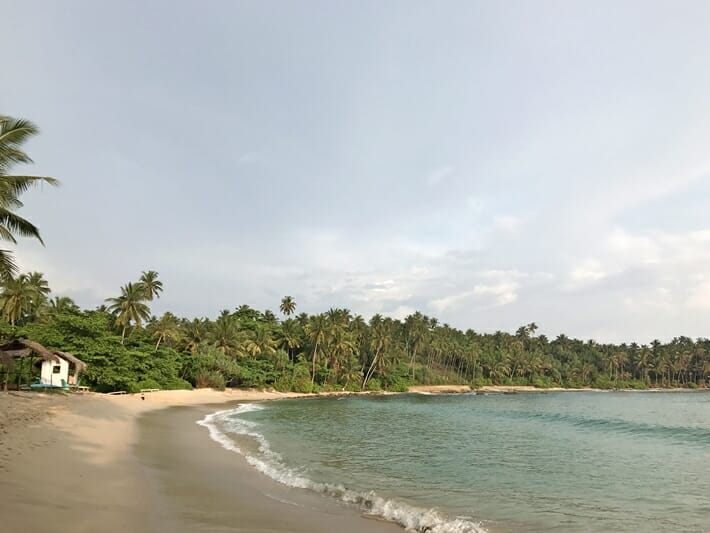
Unlike other popular tropical destinations, parts of Sri Lanka have remained relatively pure, untouched and unspoiled. It’s never too difficult to find a quiet stretch of the beach or stray off the beaten track.
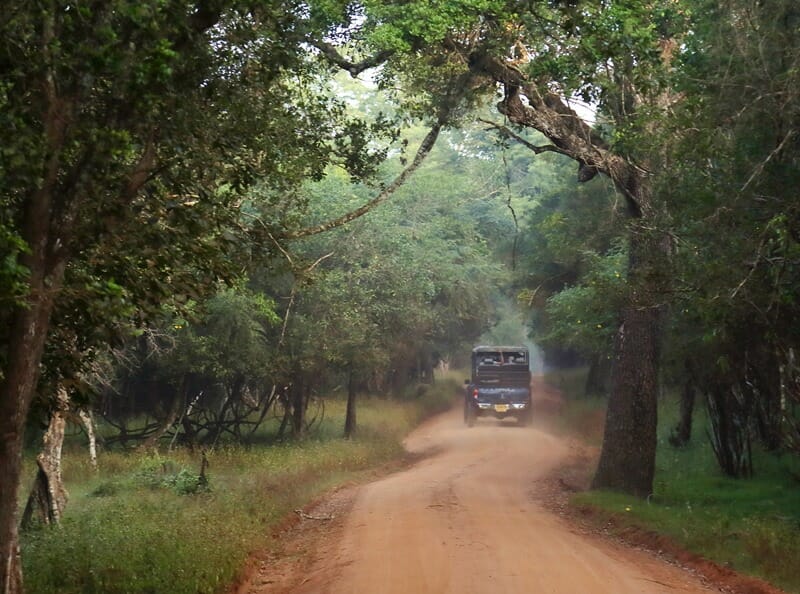
In particular, the north and east coasts of Sri Lanka are often left off the “classic” Sri Lanka tourist itinerary, and many gems are just waiting to be discovered there.
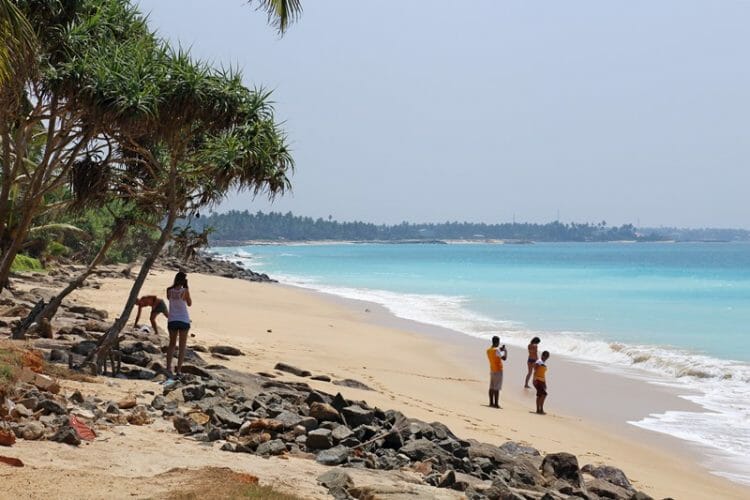
Even along the popular south coast of Sri Lanka you’re never too far away from an undeveloped strip of golden beach or hidden boutique hotel away from the crowds. You just have to venture beyond the obvious tourist-heavy destinations.
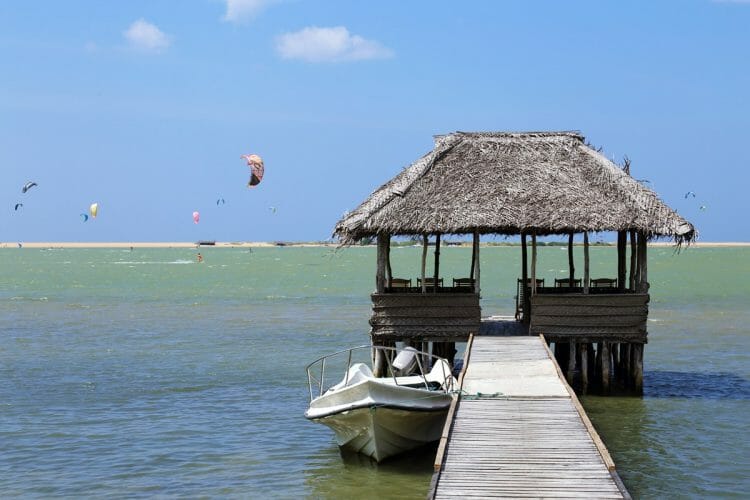
Yes, there are massive tourist destinations and slightly shady beach parties, but you won’t find anywhere like Kuta, Patpong or Patong in Sri Lanka. With tourism rates projected to explode over the next few years, now is the perfect time to visit!
8. Don’t expect a huge party scene
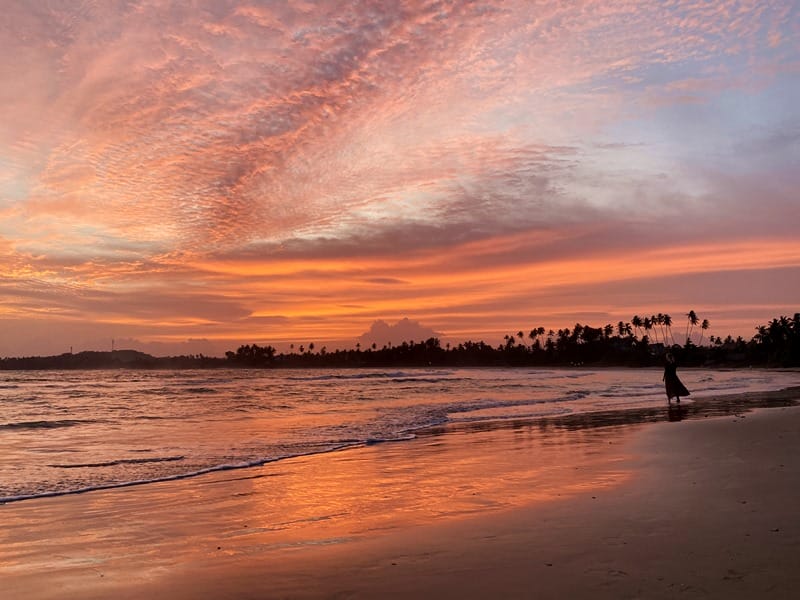
Sri Lanka, especially in areas outside of Colombo, is fairly laid back and chill – there aren’t many places to go for a fancy night out and there are not a whole lot of upscale clubs and bars.
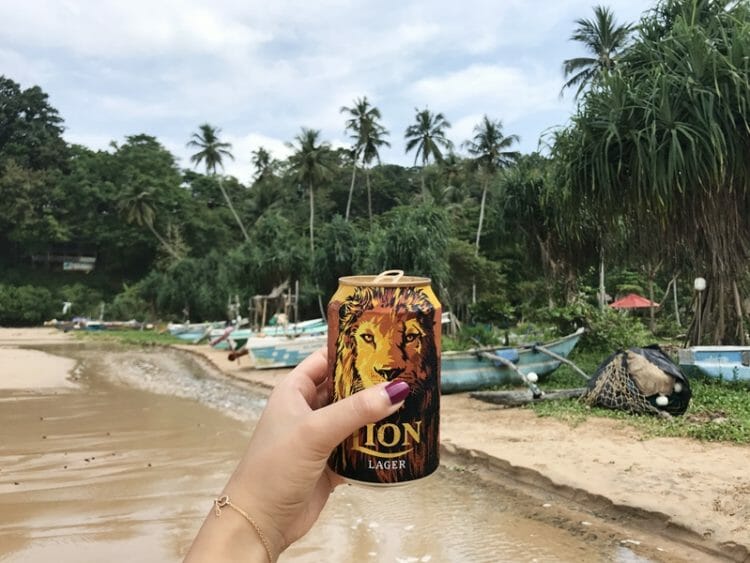
Lounging on an empty beach is one of the best things to do in Sri Lanka – it’s definitely more of a beer & sunset place rather than a “full moon party” beach rave scene, if that makes sense!
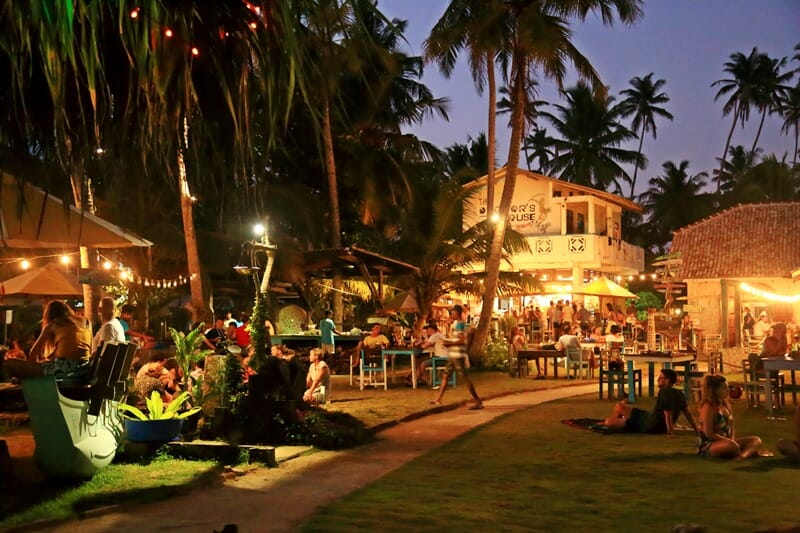
That being said, there are a handful of places where you can head to for a guaranteed good time – ping pong competitions, open mic nights, live music, banging cocktails – you just have to know where to go.
More: There are tons of great accommodation options in Sri Lanka (and places with beachfront or poolside bars, wink wink) – click here for more hotel options and current prices!
9. Home to one of the 50 best bars in Asia
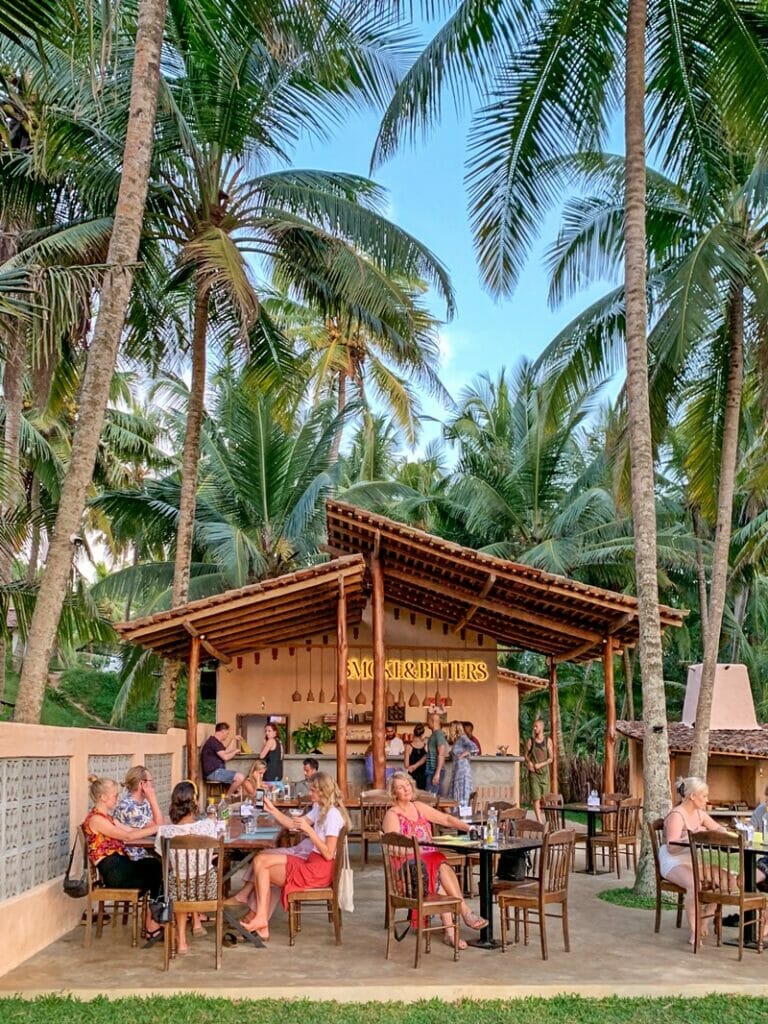
Surrounded by swaying coconut palms in the picturesque beach town of Hiriketiya in south Sri Lanka, Smoke & Bitters is a must-visit for cocktail lovers.
It is one of our personal favourite places to go, and the experts agree – naming it as one of the top 50 bars in Asia – 2 years in a row! We love the Mai Chai and No. 23 cocktails, and never leave without ordering the coconut calamari and smoked cauliflower.
10. Sri Lanka is a photographer’s dream come true
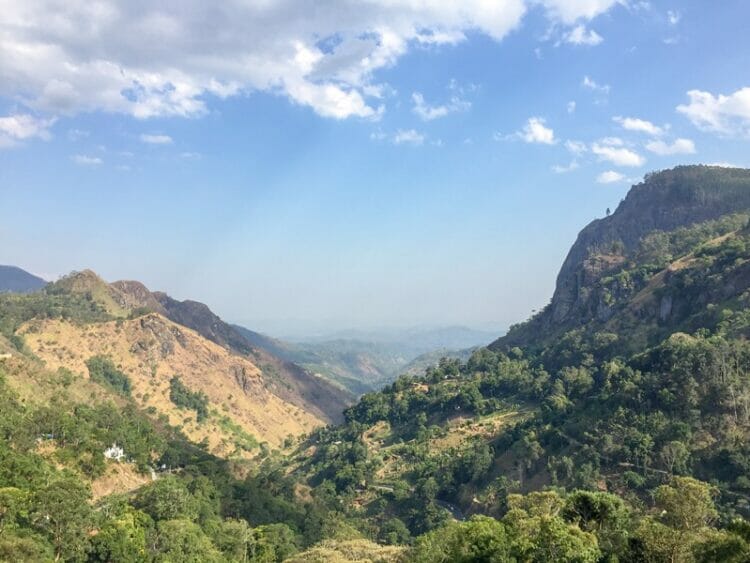
Sri Lanka is incredibly photogenic and avid photographers will have the opportunity to snap stunning shots of the landscape and people. You will need to bring an extra SD card or upgrade your cloud storage!
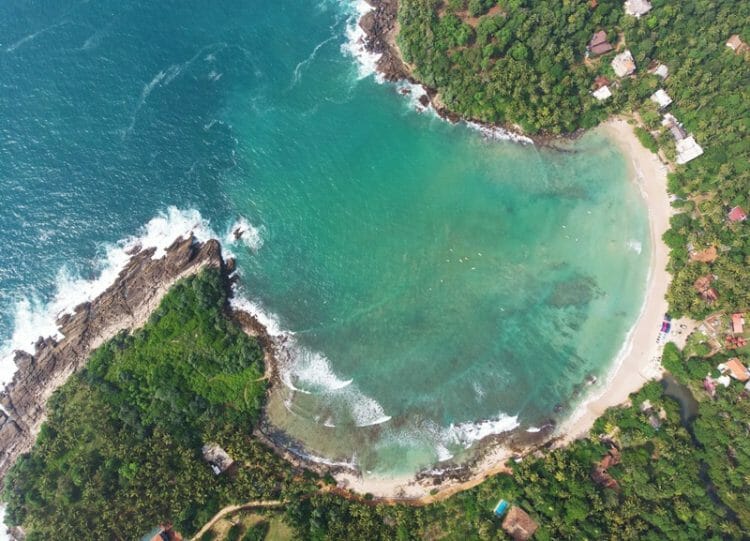
If you are hoping to fly your drone in Sri Lanka, you will need to register it with the Civil Aviation Authority in advance or else risk being fined by the police and your drone confiscated. Any drone that has a camera will need to be registered via the official website here, and approval takes approximately 10 working days.
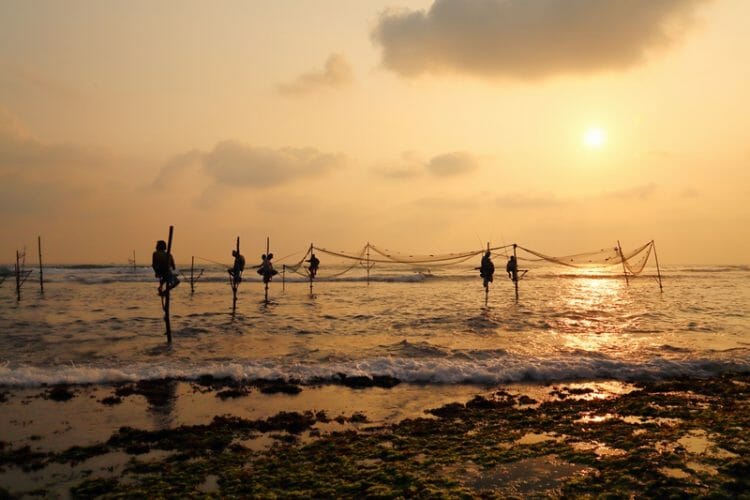
First-time visitors to Sri Lanka should also know that some photo opps, like the famous stilt fishermen, will cost you and unfortunately not many people still fish this way as it’s easier to charge tourists for a picture. Tip: the “going rate” is 500-1000 LKR, especially if the fishermen are already positioned on the stilts.
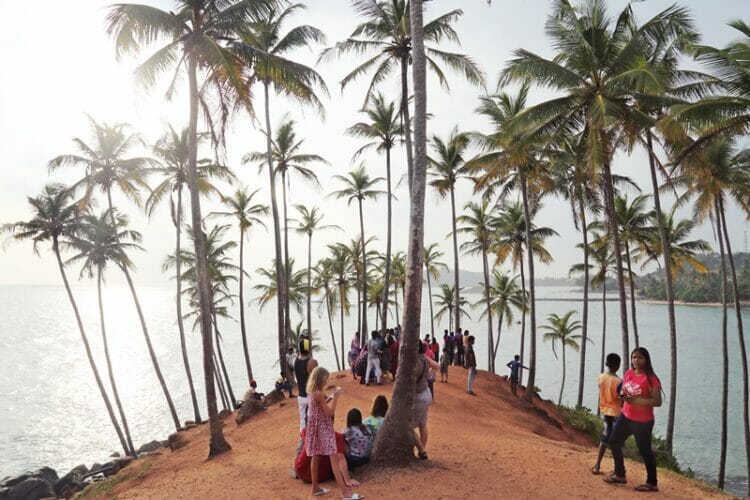
However, Sri Lanka’s photo-friendliness is a double-edged sword. I have never seen so many Instagrammers rush from Instagram spot to Instagram spot, sometimes even engaging in irresponsible and unethical experiences just to get that money shot.
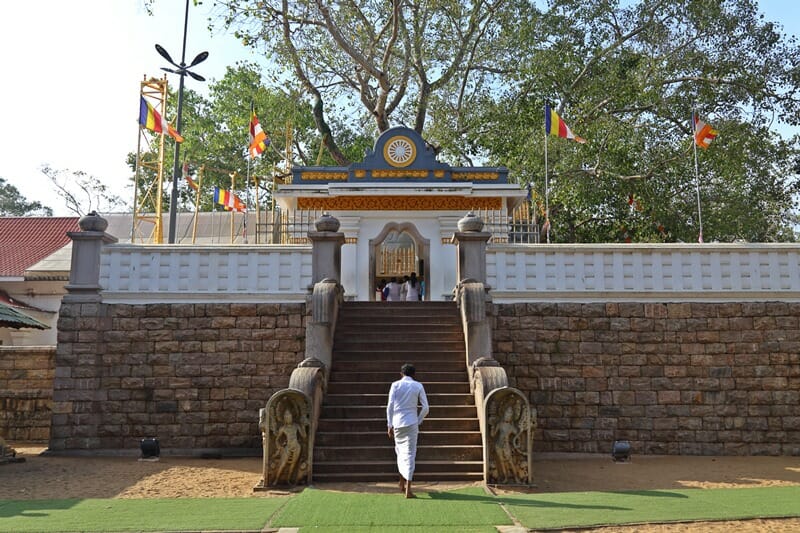
To make the most of your stay in Sri Lanka, I truly recommend not treating it like an Instagram backdrop, asking permission before you take portrait photos of people, and being mindful of your time in the country.
11. There is an abundance of fresh produce and seafood
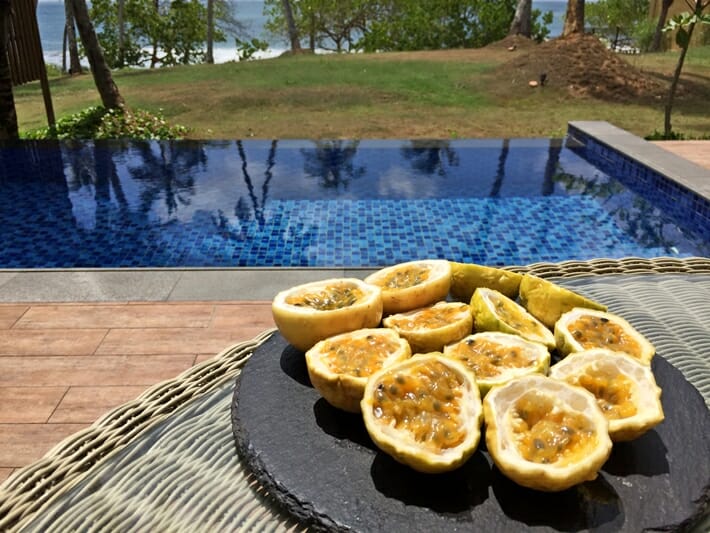
Local Sri Lankan food is often described as a milder version of Indian food (even though there are so many different types of Indian cuisine).
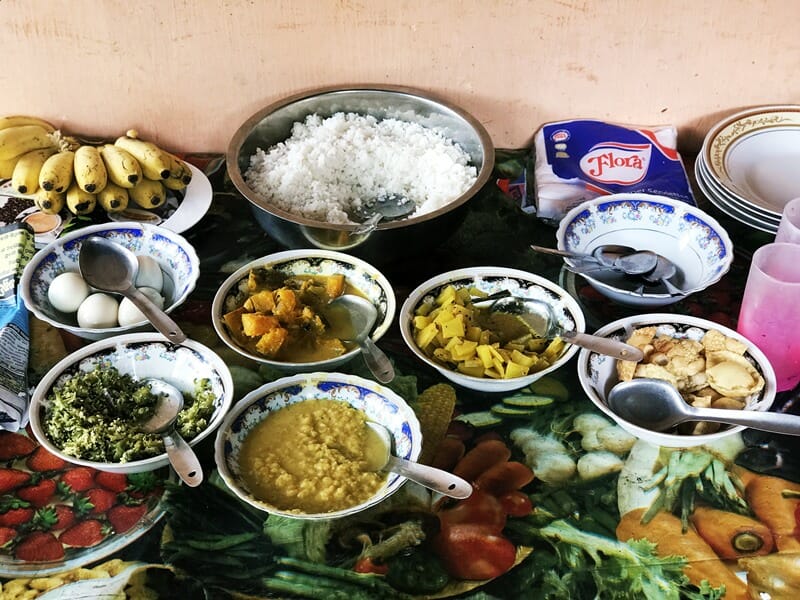
Quintessential Sri Lankan meals consist of colourful curries, rice and roti, string hoppers (steamed rice noodles), kottu (a carb-heavy diced roti dish, often served with veggies, eggs or chicken), tons of fresh seafood from the Indian Ocean and an abundance of wonderful tropical fruit.
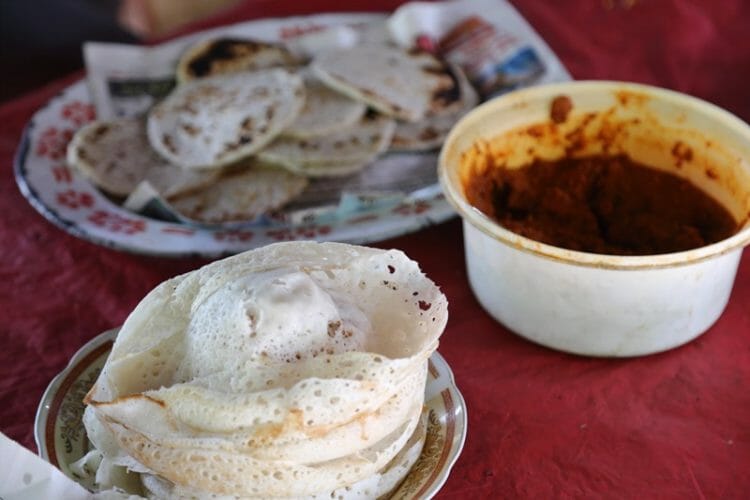
Most places will also sell western dishes, and the cost of eating out in Sri Lanka will depend on where you eat; as you can imagine, it will be more expensive to dine at a big hotel rather than a small beachfront shack.
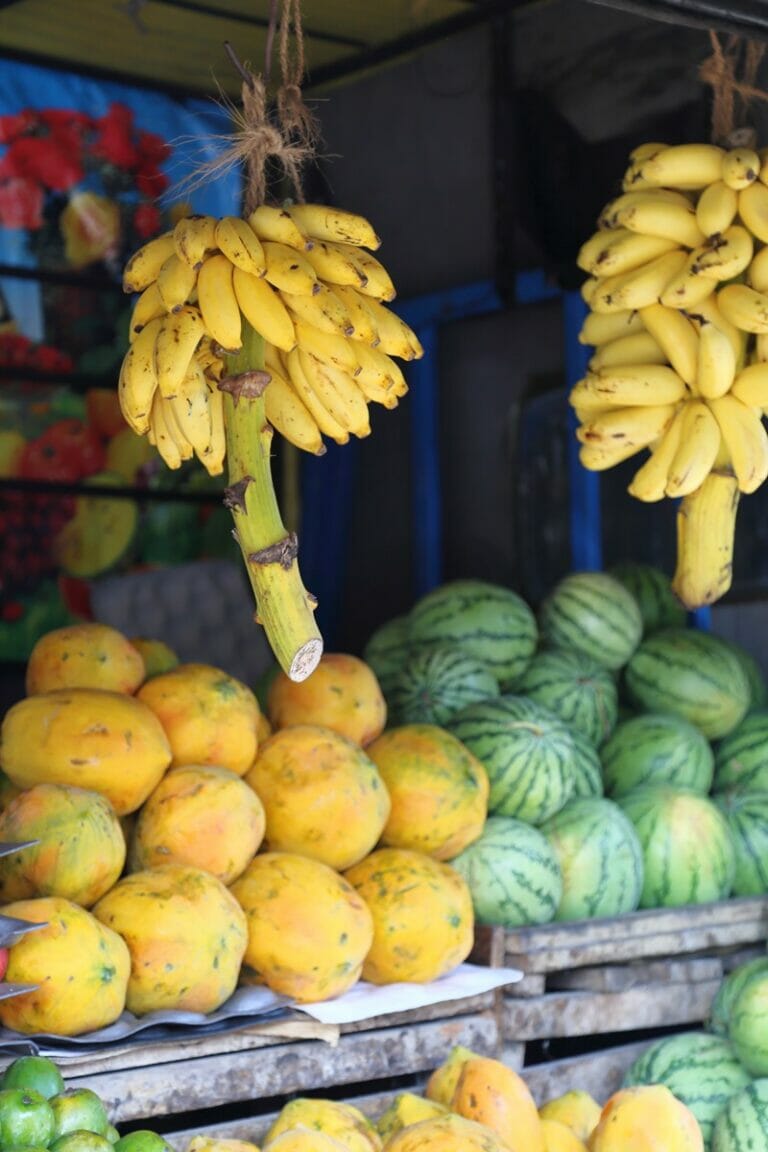
You should also know: red meat dishes can be found at most hotels but it is not served often (and will likely be more expensive than other dishes on the menu). If you are dining at smaller guesthouses and restaurants you may want to double check whether their meat and seafood are refrigerated properly and that they have a generator in case of power cuts – spoiled food can ruin your vacation with no warning!
12. You will need a visa to travel to Sri Lanka
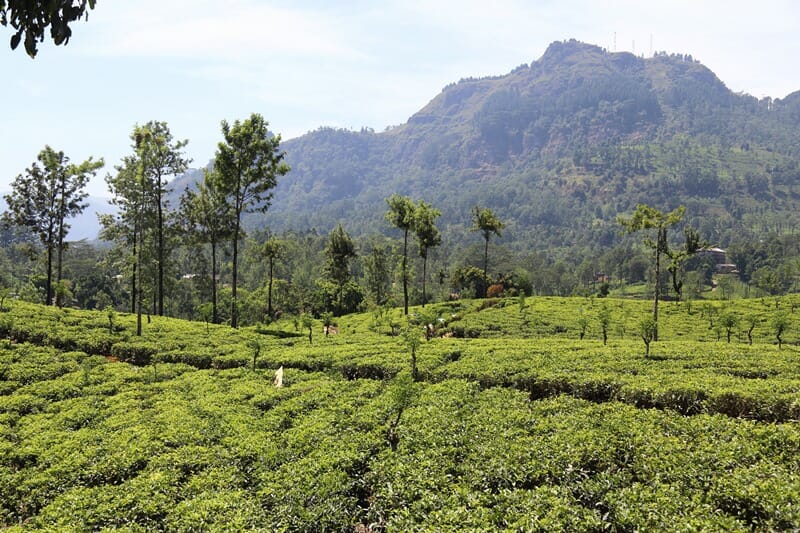
There has been a lot of uncertainty surrounding the Sri Lanka e-visa issue in 2024 – a new website was launched which was swiftly suspended by the Supreme Court just months later. Between August to September 2024 there was no e-visa system, but here is the latest update as of September 27th 2024: the former ETA system located at eta.gov.lk has been officially reinstated.
Most visitors will need to apply for a Sri Lanka tourist visa (except for nationals of Singapore, Maldives and Seychelles) but this is easily done online.
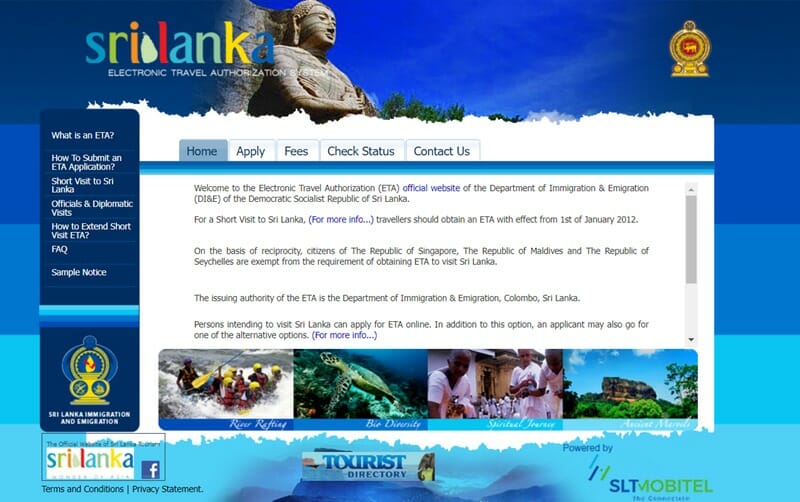
My advice is to apply at least a week before your trip, it previously took 24-48 hours for the visa approval to come through. If you experience payment issues when applying for a Sri Lanka e-visa you may have to try a few different credit cards before it eventually goes through.
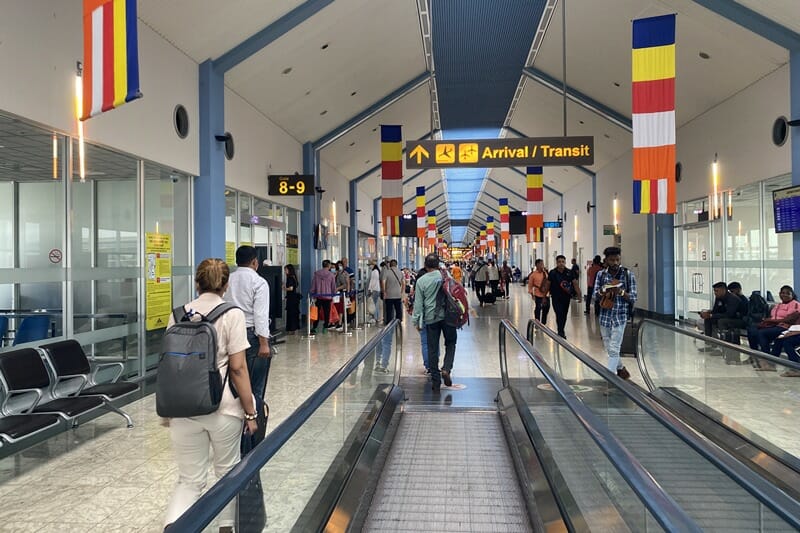
Alternatively, you can obtain a Sri Lankan visa on arrival. The caveat is that there are only a handful of counters and you could end up waiting in line for a long while during the peak travel season, so you’re best off applying for the visa online.
You should also submit your arrival form online via this website to save some time, as paper forms may not be handed out on flights anymore.
13. Sunscreen is pricey and hard to find in local shops
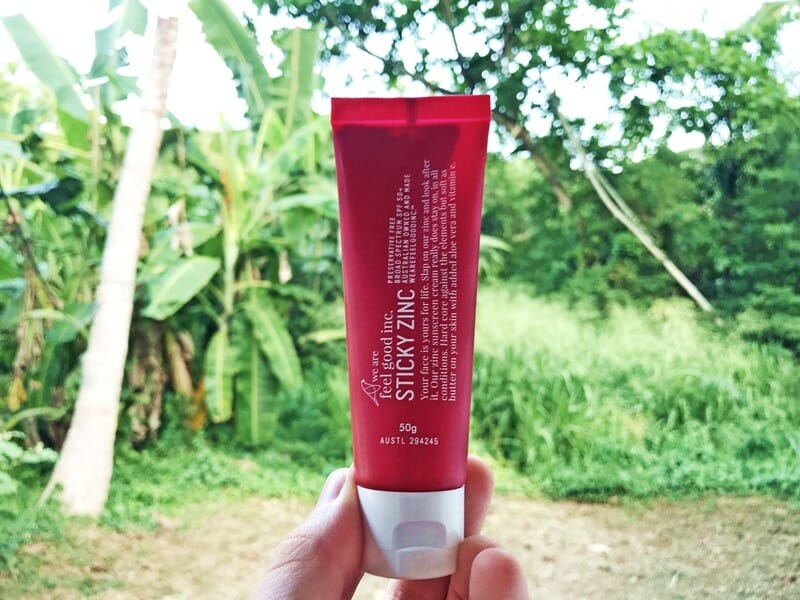
It can be hard to find high quality sunscreen (anything over SPF 30 is impossible to find) in local shops and supermarkets, and shops that do stock sunscreen can charge exorbitant prices. Reef-safe sunscreen is also somewhat of a rarity.
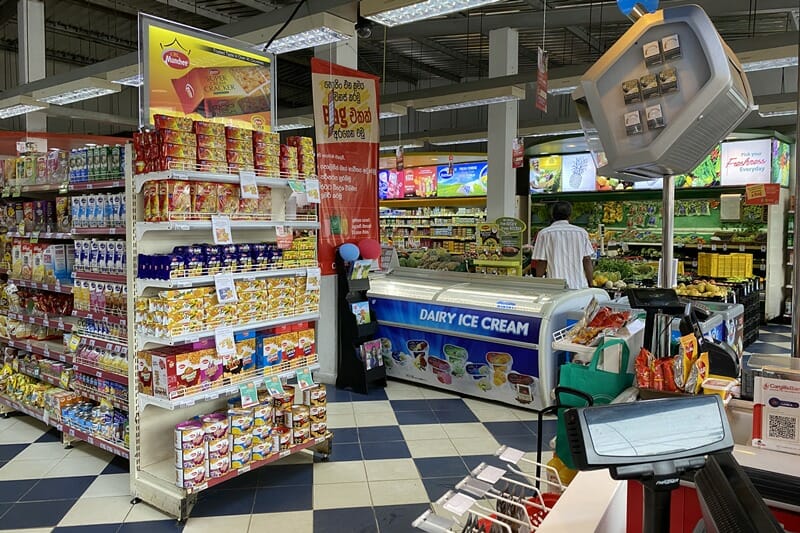
If you’re traveling to the beaches along the south or east coast of Sri Lanka, come prepared and bring your own. I usually stock up ahead of time and buy this highly-rated reef-safe sunscreen online here.

Otherwise, you can pick some up (at a mark up) from La Playa or Island Luxe in Hiriketiya, The Box surf shop in Madiha (near Matara), Urban Island in Colombo or The Bite coffee shop in Arugam Bay. While I’m at it, ladies: bring tampons or your menstrual cup as they are more difficult to come by here.
14. Sri Lanka is an underrated honeymoon destination
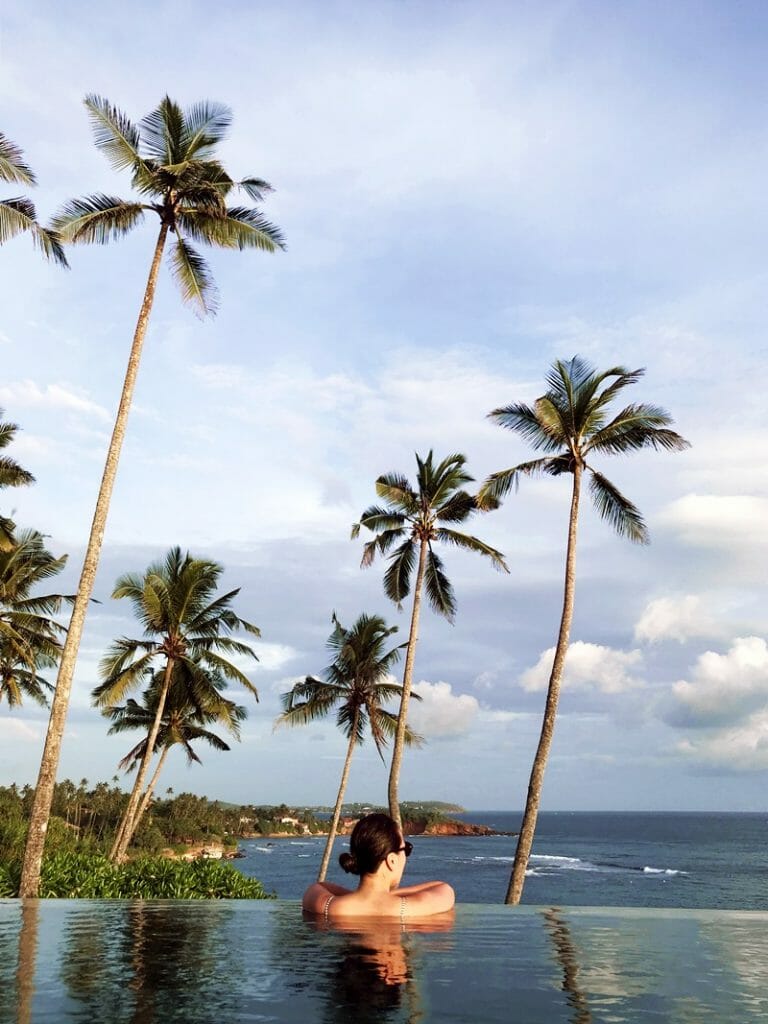
Most people hop over to the Maldives, but Sri Lanka is a growing, up-and-coming honeymoon destination in Asia for active couples who are looking for a unique and memorable holiday.
If you are looking for a honeymoon experience that offers a little bit of everything, head to Sri Lanka for uncrowded wildlife safari opportunities, a kaleidoscope of dreamy landscapes from the tea-filled hills to the golden beaches and cultural ruins and heritage sites. This 2 week Sri Lanka itinerary can help you get started!
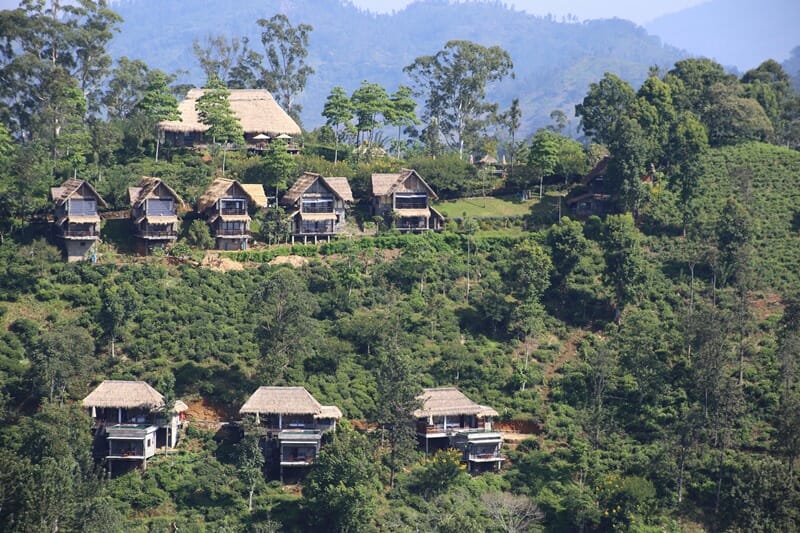
There are tons of “pinch-me” honeymoon hotels in Sri Lanka including Madulkelle Tea & Eco Lodge near Kandy, 98 Acres in Ella, Fort Printers in Galle, Cape Weligama in south Sri Lanka, Sam & Lola’s (adults only) in Hiriketiya, Wild Coast Tented Lodge in Yala, Anantara Tangalle and the new Kayaam House (adults only) in Tangalle.
15. Only 1 hour away from the Maldives
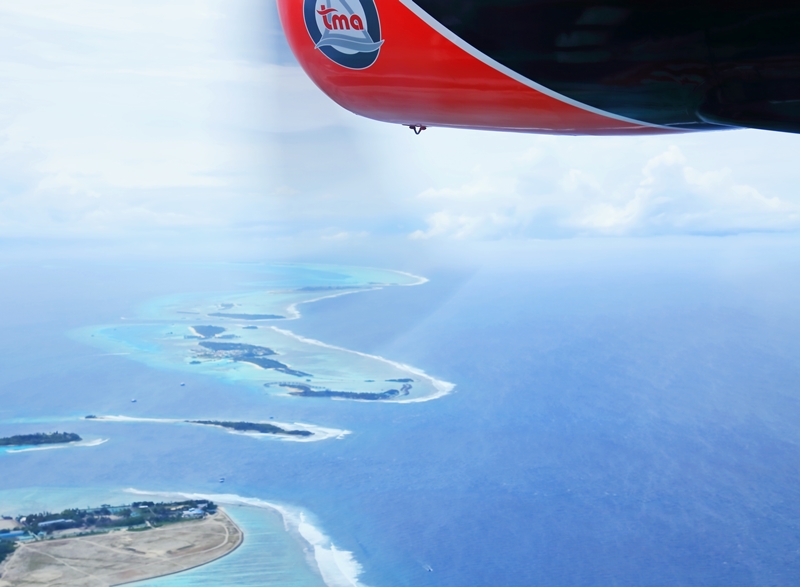
For those of you who, like me, did not ace geography in school, the Maldives archipelago is just a quick 1-hour flight away from Sri Lanka. So it is a no-brainer to combine the two destinations on the same trip if you are making the long journey over from Australia, New Zealand, Europe or North America.
Sri Lankan Airlines flies direct from Colombo to Male daily, and flights are usually reasonably priced if you book far enough in advance!
16. You can go hot air ballooning
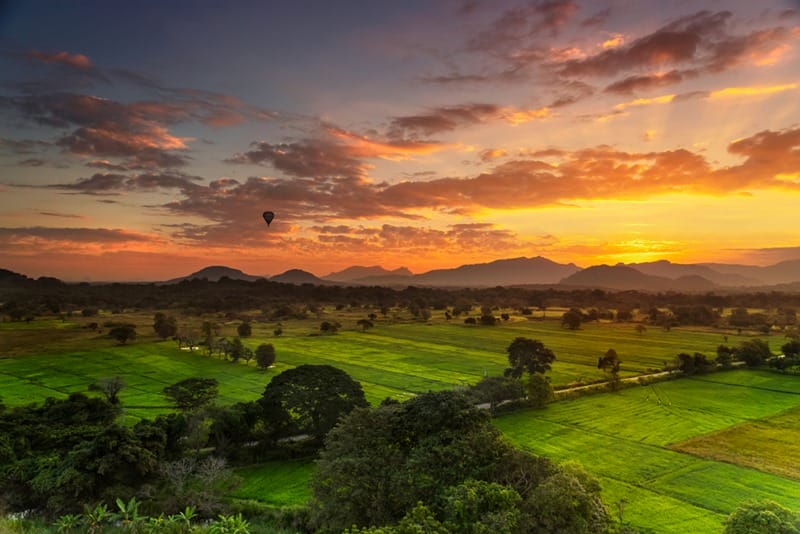
While other destinations in Asia are far better known for hot air ballooning (like Bagan in Myanmar, Vang Vieng in Laos, Cappadocia in Turkiye or Taitung in Taiwan), it is actually possible to go on a hot air balloon ride in Sri Lanka in the Central Sri Lanka Cultural Triangle.
Soaring over lush rice paddies, palm-filled jungles and lakes in Dambulla, the Sri Lanka hot air balloon season typically runs from about November to April. Flights cost approximately US$250 per adult for a 1-hour flight, and can be booked with two hot air balloon companies in Sri Lanka: Sunrise Ballooning and Sri Lanka Balloon/Lanka Ballooning.
17. One of the best places in the world to surf
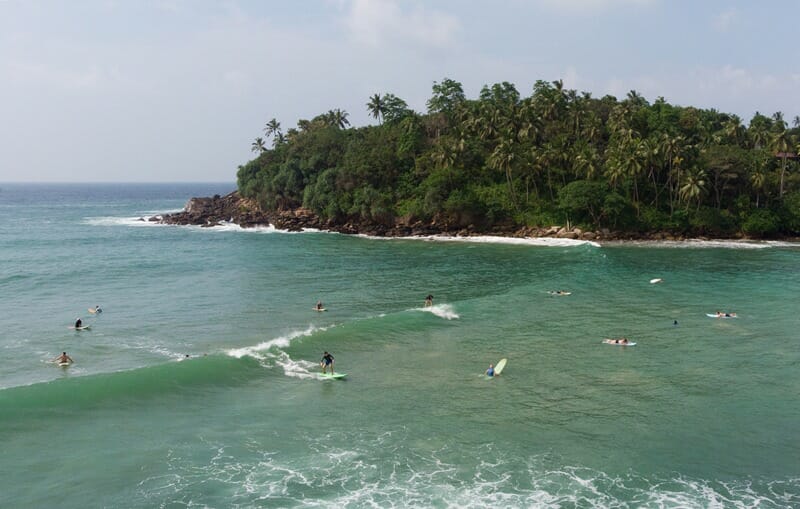
Sri Lanka is often overshadowed by places like Bali, the Maldives and the Philippines when it comes to surf destinations in Asia. But those looking for uncrowded waves (many of which are beginner-friendly) and a huge portfolio of surf breaks should considering adding Sri Lanka to their list of places to surf.
From Arugam Bay’s famous peeling right-hand point breaks on the east coast to the beach and reef breaks all along the south coast of Sri Lanka, Sri Lanka is one of the most underrated surf destinations. Beginners looking for perfect learning conditions will especially love the warm water as well as the gentle whitewater and green waves.
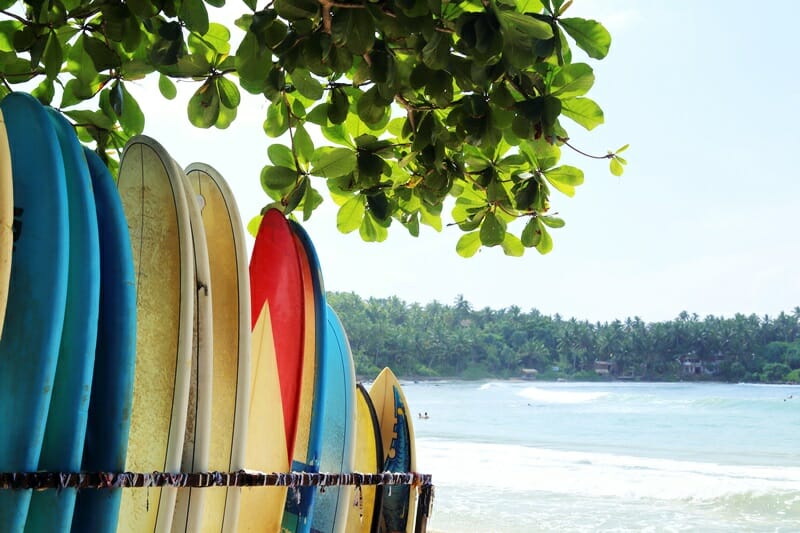
Sign up for a casual, one-off lesson at almost every major beach in south Sri Lanka or book yourself on a weeklong surf retreat at Talalla Surf if you are serious about learning and improving.
18. Leopard sightings are possible, but rare

One of the most unique things to know about Sri Lanka is that it is home to the Sri Lankan leopard, an endangered species and apex predator on the island.
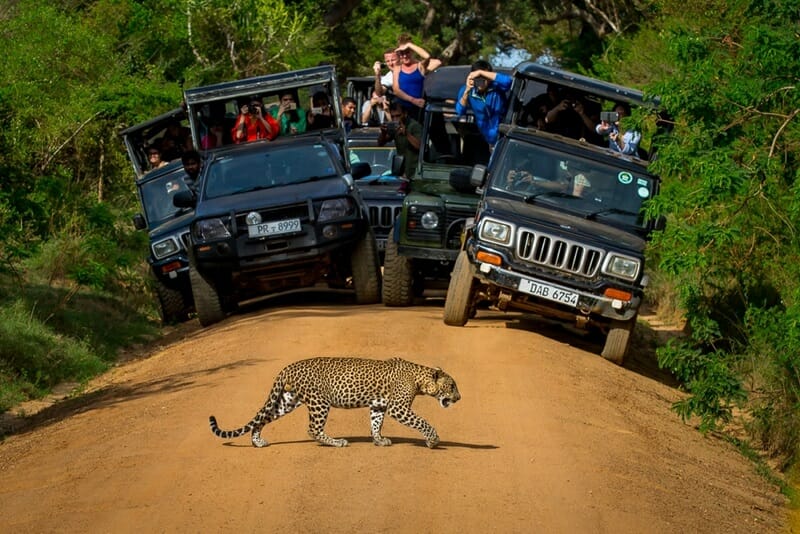
Though it is believed that Yala National Park has one of the highest leopard population densities in the world, it is actually still fairly rare to spot a wild leopard on a wildlife safari in Sri Lanka, and it isn’t uncommon for hordes of jeeps to rush to a crowded sighting when one does emerge from the jungle. Leopards are not only found in Yala National Park – sightings also do very occasionally happen in Wilpattu National Park in the northwest, Kumana National Park in the east, and also Udawalawe National Park in the south.
To maximize your chances of seeing a leopard in Sri Lanka, aim to be at the park entrance first thing in the morning and go on multiple game drives over a few days. You’ll also need an experienced spotter and guide, and ensure that your driver doesn’t corner wild animals!
19. Wild animals aren’t just in the national parks
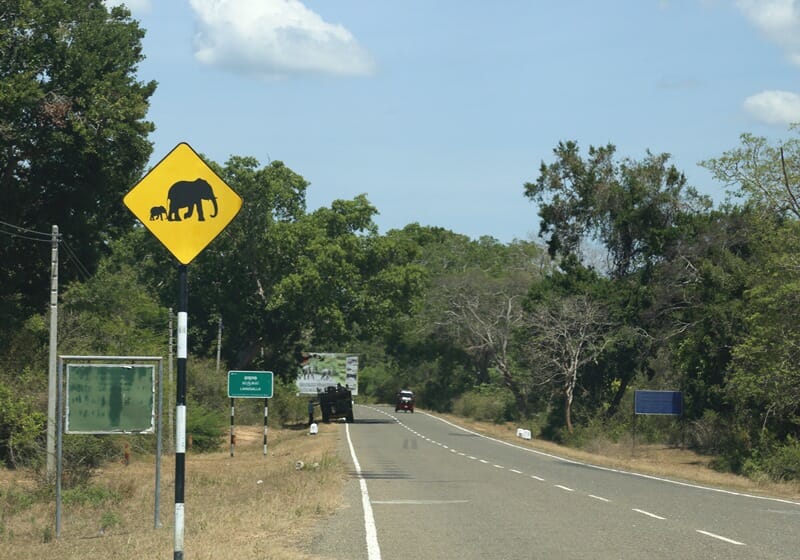
Wild animals in Sri Lanka go almost anywhere they please, and are not always restricted to the national parks. With the exception of maybe Colombo, don’t be surprised if you see monkeys almost everywhere else across the island.
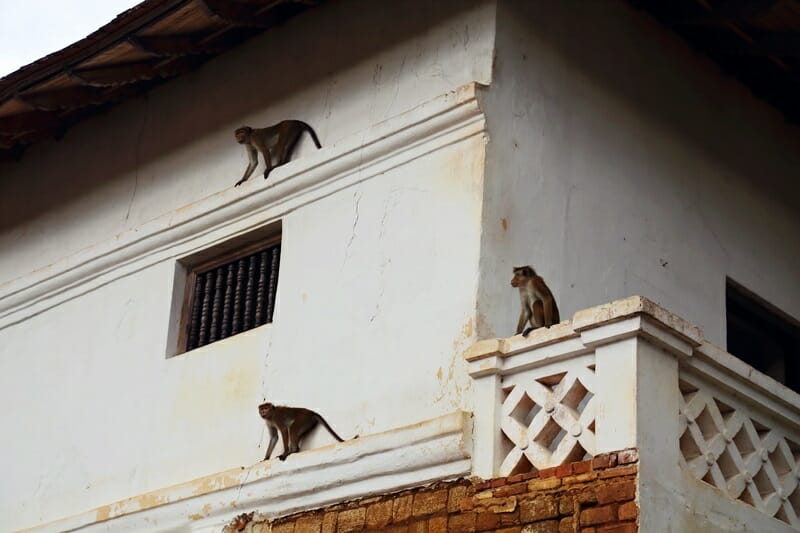
The three species of monkeys including gray langurs, purple-faced leaf monkeys and toque macaques can be found scrambling over the roof of the Temple of the Tooth in Kandy, lounging in the cloud forests in the Knuckles Mountain Range and climbing powerlines in the bustling coastal towns of south Sri Lanka.
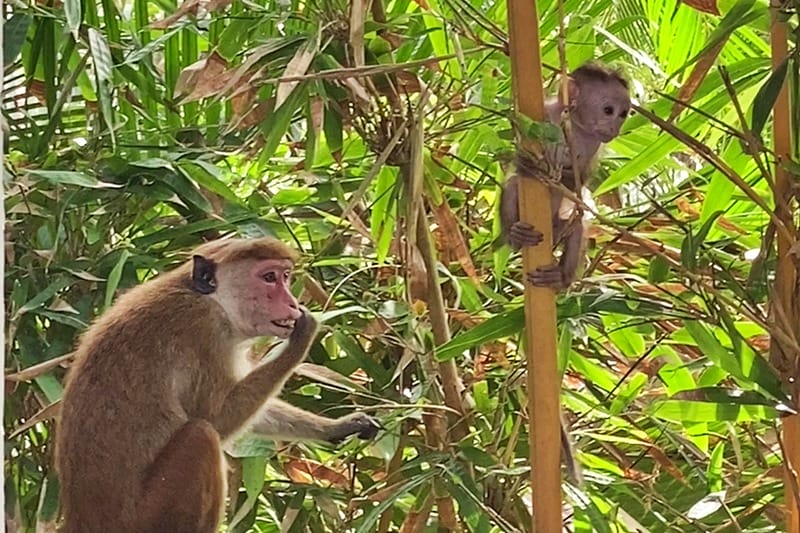
Monkeys in Sri Lanka can be very cheeky and food-motivated, and often are not afraid of humans. It’s not unheard of for monkeys to venture into cafes and steal food off the plates of unsuspecting diners, or to go back to your hotel room only to find a monkey or two taking a dip in the private pool.
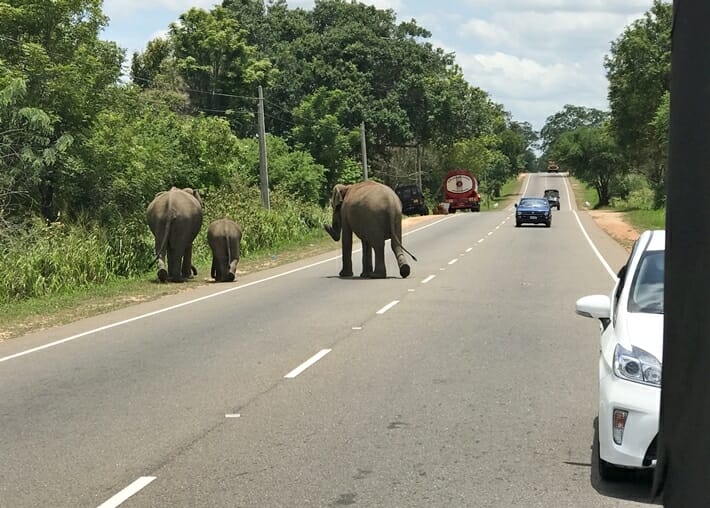
Wild elephants are also occasionally found crossing the road – especially in south Sri Lanka and around the national parks of central Sri Lanka. Wild monkeys and elephants should be left alone. In fact, tourists have often found themselves in hot water when getting too close to wild elephants.

While it is a bit of a novel sight, it is important not to feed wildlife and to not taunt or approach the monkeys and elephants.
20. It is illegal to swim with whales
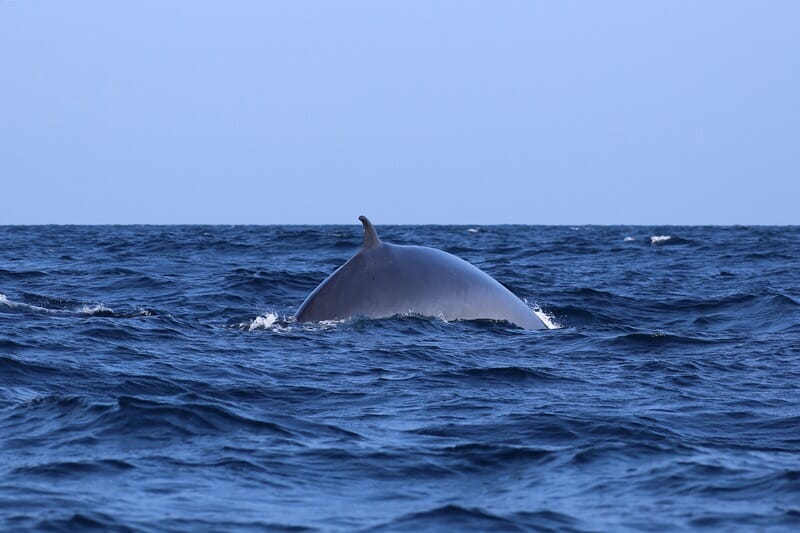
While I’m at it….planning on going swimming with whales in Sri Lanka? Think again. If your whale watching tour in Sri Lanka offers the opportunity to jump in the water and swim with wild whales, chances are they are breaking the law and disturbing the wildlife in their natural habitat.
Several species of whales can be found in Sri Lankan waters, including the sperm whale, humpback, Bryde’s and the massive blue whale – Sri Lanka is one of the best places in the world to go whale watching! Whale watching tours in Sri Lanka mostly depart from Mirissa, Kalpitiya or Trincomalee depending on the season.
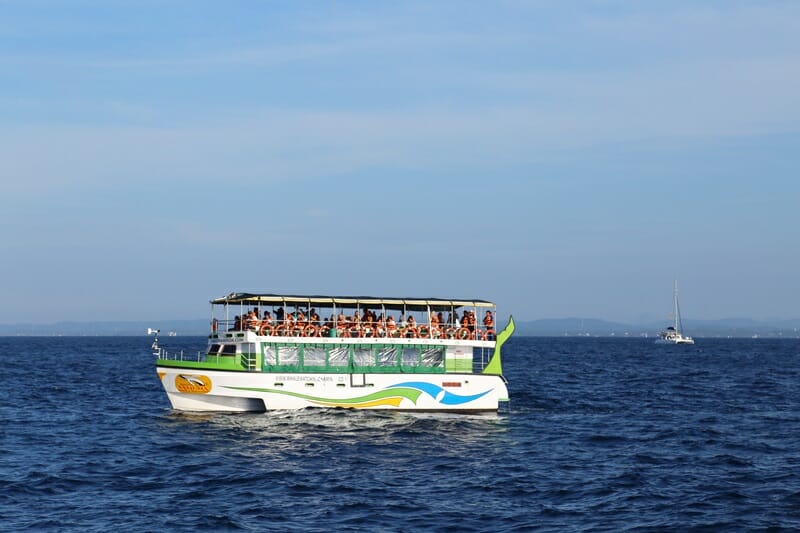
Sri Lanka has strict regulations for whale and dolphin watching, including the distance at which boats must remain away from whales, not changing the speed or direction abruptly and not blocking the migration path. Just as importantly, the law dictates that “Persons engaged in observing sea mammals should not be allowed to get into the sea or do anything which is harmful to the sea mammals, other than for diving after obtaining the prior approval of the Director – General.”
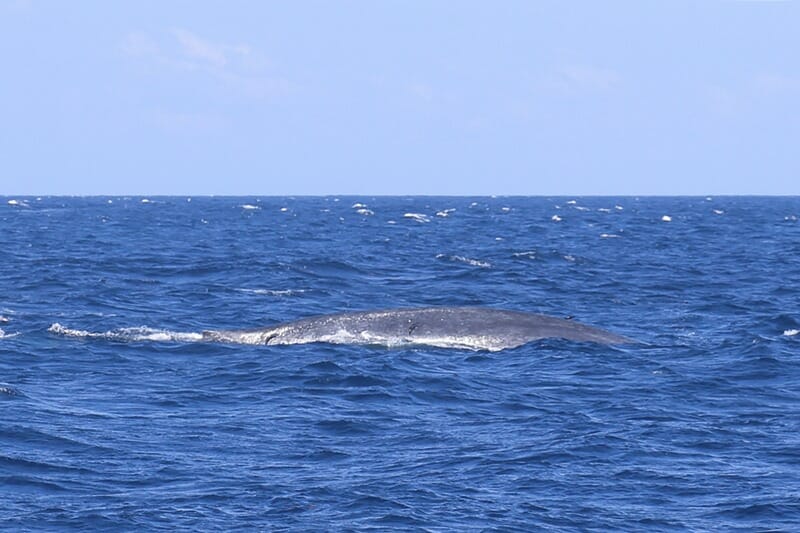
Unless you have the proper diving certifications and have prior authorization from the Director General of the Department of Wildlife Conservation in Sri Lanka, you should not be getting into the water with whales. The Sri Lanka Tourism Development Authority separately also states that “No swimming or diving with whales are offered in Sri Lankan marine water.”
Ready to book your trip to Sri Lanka? Click here for more accommodation options!
Looking for even more Sri Lanka travel tips and destination guides? I’ve got you covered!
- Wondering what NOT to do in Sri Lanka? Here are some common Sri Lanka travel mistakes you’ll want to avoid
- Start your Sri Lanka travel planning here with a list of some of the top destinations in Sri Lanka
- And get inspired with this classic 2 weeks in Sri Lanka itinerary
- Sri Lanka’s Cultural Triangle is unmissable – here are 7 places you can’t miss
- Colombo is the transportation gateway to the rest of Sri Lanka. Here is my Colombo city guide
- Did you know? Sri Lanka is one of the best places in the world to see elephants in the wild. Here is where to see elephants in Sri Lanka
- I’ve loved experiencing boutique and luxury hotels around the island. Here are some of my favorite hotels in Sri Lanka
What are some other things about Sri Lanka that you think travelers should know? Did you find these Sri Lanka travel tips helpful? Join the Sri Lanka Travel Inspiration Facebook group for even more tips, recommendations and advice!
Pin this for later!
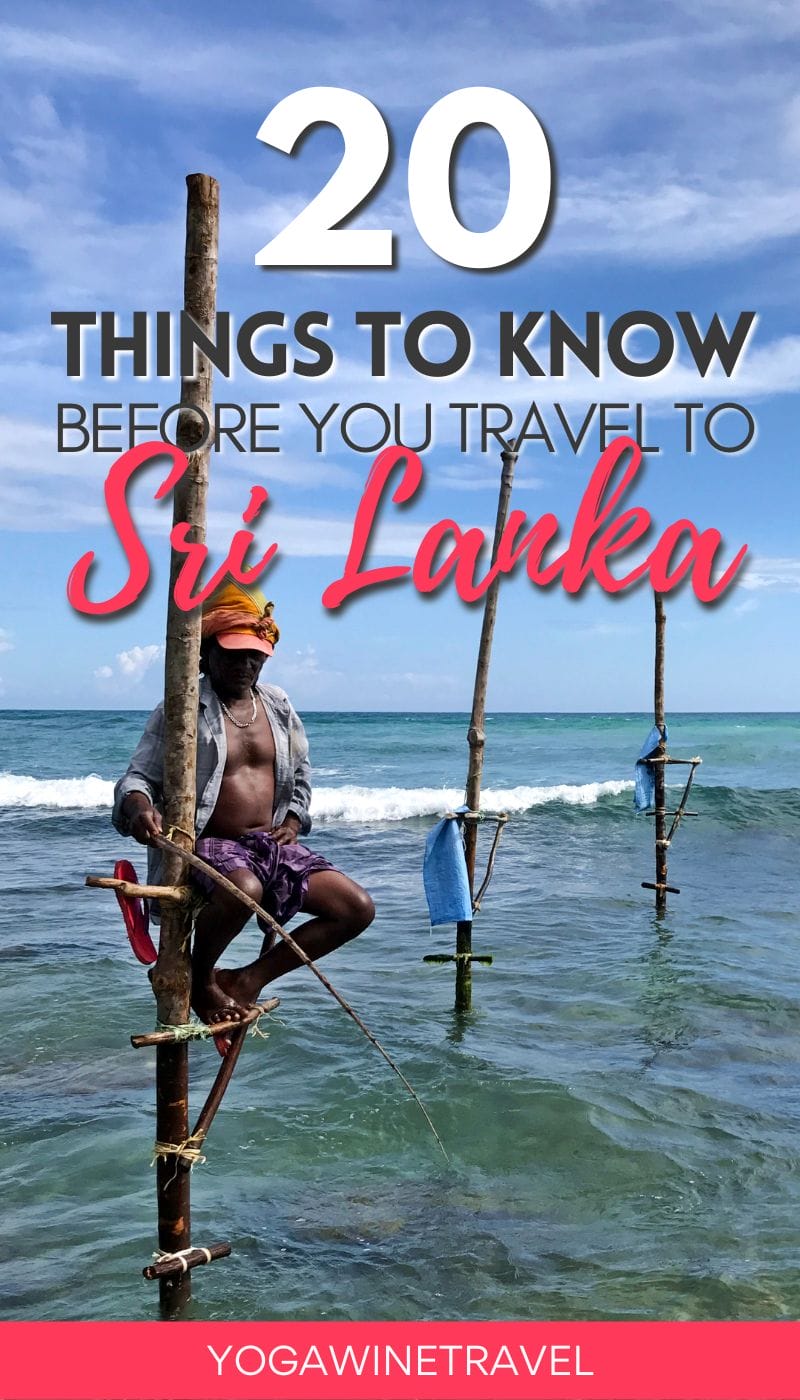
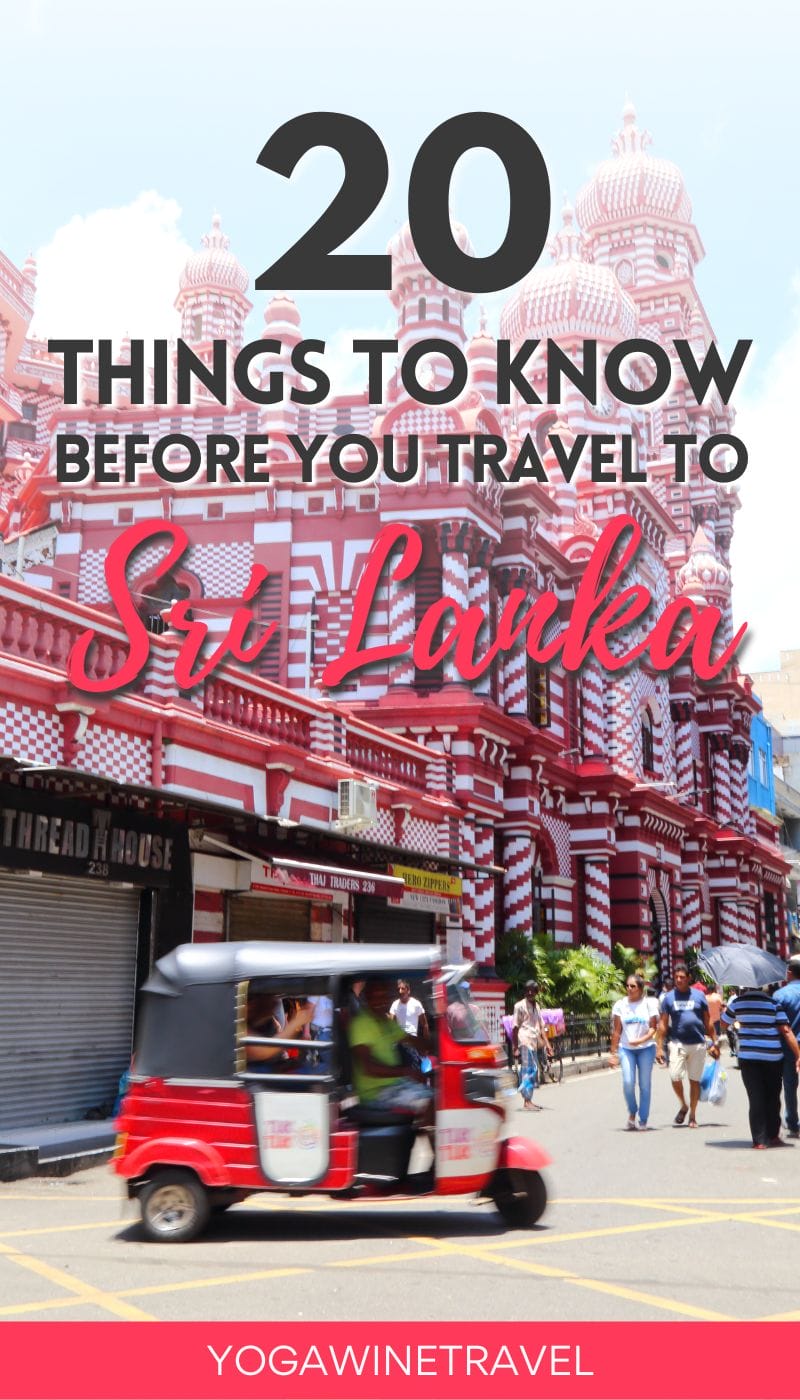
This article contains affiliate links. If you choose to book using these links, I will earn a small commission at no extra cost to you. Thank you for supporting my website by using these links.
Enjoyed reading this article? Subscribe to the mailing list!
* Unsubscribe at any time. Your e-mail address will only ever be used to send the occasional Yoga, Wine & Travel newsletter.

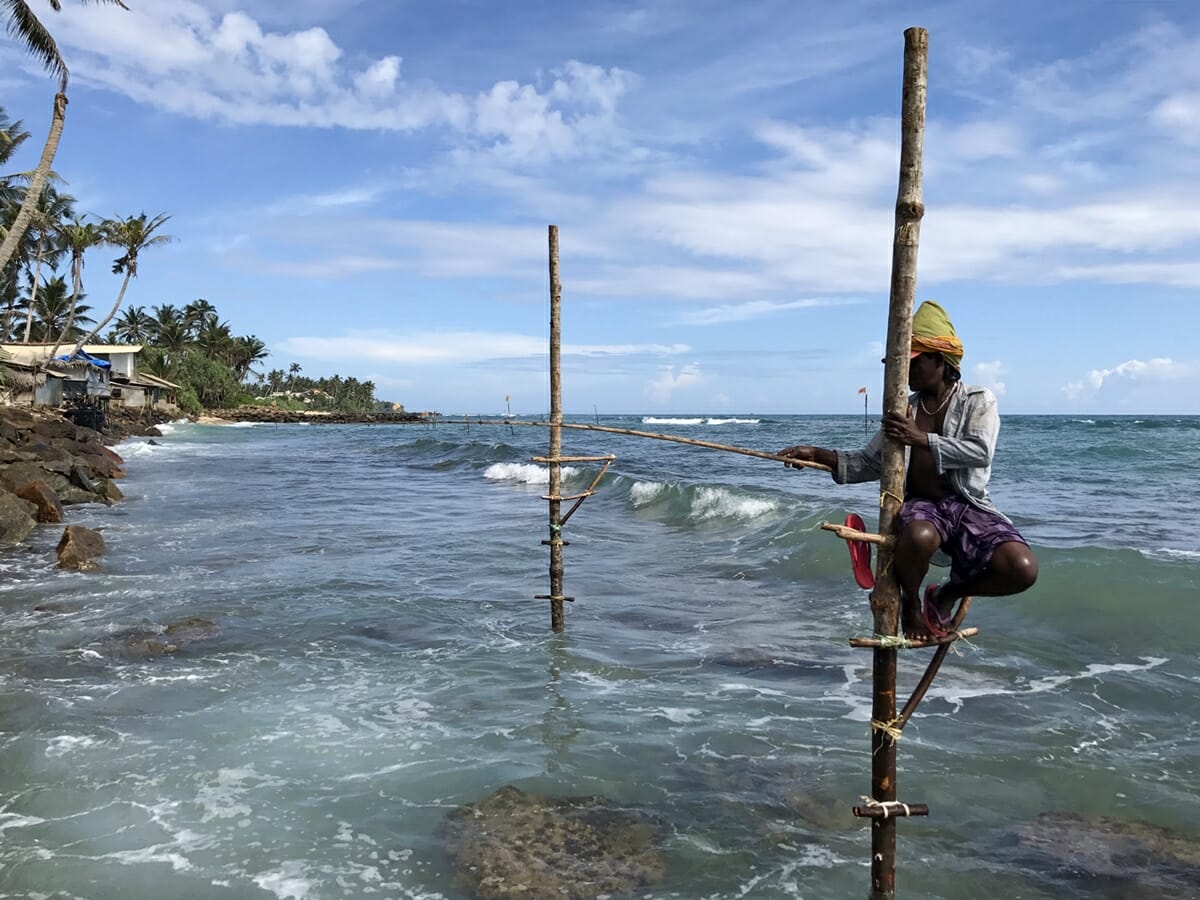



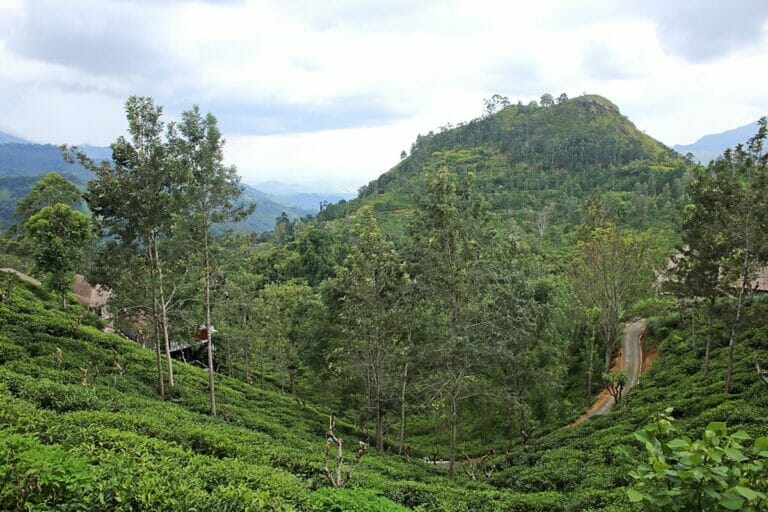
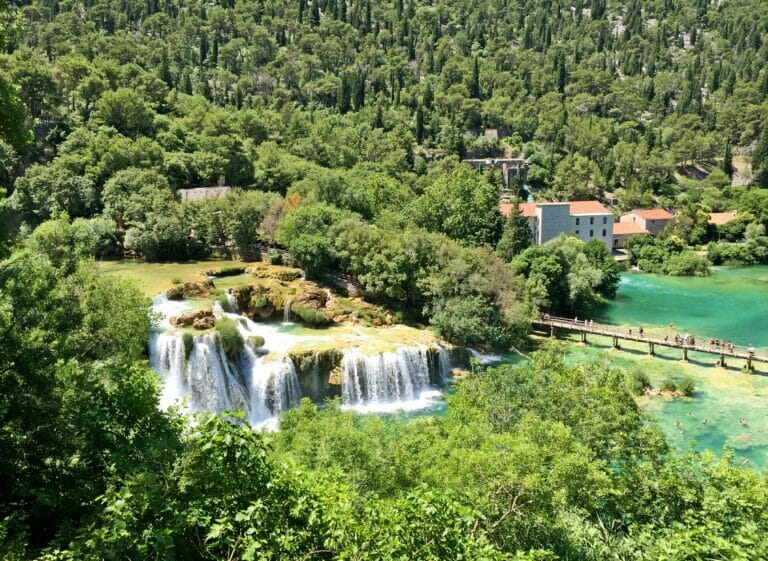
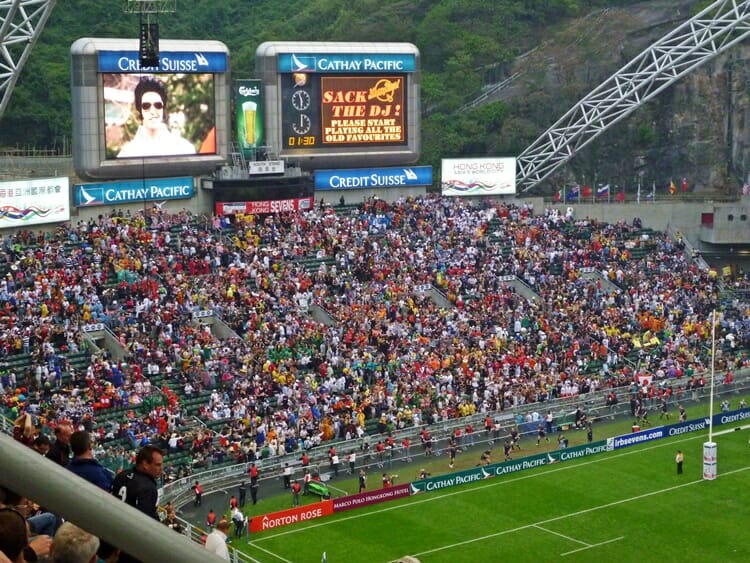

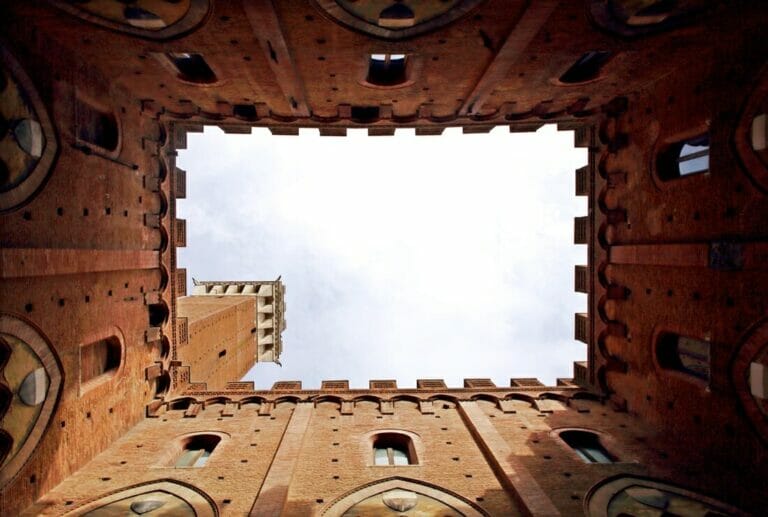
Thanks for the handy information. You wrote that visa fee is waived till February 2020, but when I visited http://www.eta.gov.lk/slvisa/, a message popped up saying “Those who hold passports of listed countries and travel to Sri Lanka from 01.08.2019 to 31.01.2020 for Tourist purposes are exempted paying ETA fee, in view of enhancing tourist arrivals from designated countries.” Could you tell me if it’s free for February as well?
The visa-waiver program ended at the end of January.
Thank you for such details and important pieces of information. I just got one question. While applying for the visa, I read that they would check if we can support our stay in Sri Lanka and have enough finances or not. How do we prove that? Also, is it better to take Forex Card or hard cash?
Hi Darsh, I’ve never been asked for proof of finances during the visa application nor at immigration upon arrival. I would recommend bringing US dollars for exchange at the airport, or a Forex card to withdraw money from a local ATM. Either way you should have some Sri Lankan Rupees on hand when you leave the airport so that you can pay for your airport transfer.
Sri Lanka is the best country to travel in. Small country and beautiful. You shared the 12 things about visiting Sri Lanka is helpful for visitors. Nice guideline. Thanks a lot for this beauty Enjoying article with me. I appreciate it very much!
Thanks for taking the time to read this!
Awesome post and your so right about it being a photographers dream! Agree with all of the points apart from it costing more than other SE Asian countries. We managed to spend £15 a day for two people and lived seriously well, though we were in super budget accommodation and it was 2 years ago. We’ve heard that it’s not as good value for money for midrange hotels, which is something we noticed.
Did you get a chance to visit Northern Sri Lanka?
Hi Josh, thanks for checking this out! We have not made it to Jaffna, it’s a little far from where we are based (in the south) – maybe we’ll make it there next year.
i’m going there and this really helps
Hi Bella, so glad that you found this helpful. I have lots of articles and guides for Sri Lanka, you can check out all of them over here: https://www.yogawinetravel.com/travel/sri-lanka/
Happy travels!
Its very helpful to all sri lanka traveler & sirlanka is very pretty place to visit in this world….
Thanks so much for taking the time to read this, Ryan!
Hello Flo,
I just loved your description and the story accompanied by pictures !!:))
I planned a kind a “last minutes- really needs to get out of the real world ” holiday with a friend and I would love to have some of your advices!
We arrive to Colombo on Sunday, and my plan was to go to Kandy (by Uber or driver – where to book it ?) and there get either the train to nuwara Eliya! Or would it be better to overnight first and then get the train? And where / which website can I book it ?
After that the plan is 3 surfing days at Arugambay from where we would love to go to Yala park and I assume there is also so much more around. The 3D day we would go already to another destination more to the north / not really defined yet. As I said it’s gonna be backpackers style but I would love to hear your recommendations about what is planned.
Another plan could be to go from Colombo direclty to Arugambay and do the 3 days surfing and then doing the safari in Yala and then move up!
I would be very very much grateful for your answer!
Thank you so much again to share your experience at this amazing island 🙂
Best
Györgyi
Hi Györgyi, thanks so much for reading this. I’ll try to answer your questions below:
– get to Kandy by driver, ask your hotel to book airport transfer for you or use Pickme.lk or AceCabs.
– Visit Seat61 for more info on the Kandy to Nuwara Eliya train, or read this here: https://www.yogawinetravel.com/train-travel-through-sri-lankas-tea-country-from-nuwara-eliya-to-kandy/ – I would recommend staying overnight first. I took the train in reverse from Nuwara Eliya to Kandy and it took 7-8 hours! If you do not want a reserved seat all you do is show up at the train station and buy a ticket, easy peasy.
– the surf in Arugam Bay isn’t in season yet! The surf season on the east coast is from June to September approximately. I recommend heading to the south coast instead if you’re arriving THIS Sunday.
– I recommend you read this guide to the south coast for the extra 3 days: https://www.yogawinetravel.com/the-ultimate-guide-to-sri-lankas-south-coast/
You’re also missing out on a lot of the cultural triangle in central Sri Lanka, you might want to stop in Sigiriya before Arugam: https://www.yogawinetravel.com/7-places-you-have-to-visit-in-sri-lankas-cultural-triangle/
Have a good trip!
Hi Flo, I am a native sri lankan and I am really happy that all the information you have given is true. Love reading your article. Keep up the good work!! But I must say if you want to travel around the island, booking a taxi via “pick me”- (a phone app to book taxi-cars, vans, tuktuks) or “uber”(another app) is cheap and safe if you are in the western (around Colombo), southern (around Galle) or central (around Kandy) of the island. It is not advisable females to hang over on roads/ towns without the company of men at night.
Hi Ishani, thanks for taking the time to read this article! I usually ask the hotel to book a vehicle to be safe, and of course Uber is great in Colombo. Will have to give “Pick Me” a try!
This is great to read. We are currently deciding if to do an organised tour with a travel company or go it alone with buses and trains. We loved doing our own thing in Vietnam but being on a schedule, we don’t want to find buses, trains etc fully booked when we get there. Is it as easy to navigate and get around as other South East Asian countries?
Hi Katie, thanks for reading this! When are you going? Buses/trains do fill up fairly quickly during the peak season, but you can book buses online (I haven’t tried it so please bear that in mind – busseat.lk is one such service) and there are companies you can pay a small commission to, to book your train tickets for you. Otherwise, just head to the station a day or so before your train to purchase the ticket. Worst comes to worst, you can always book a 1-way car transfer through your hotel. You can book these fairly last-minute and there are always drivers around. Best of luck!
Hi Flo, I grew up in Sri Lanka but haven’t been back in 35 years, and we are planning our family reunion there in 2020. All of us, a bunch of Sri Lankans reading your post to plan our itinerary, how’s that for irony? Thanks so much for all the links….. expand on the tampon comment will ya, what’s that about?
Hi Angel,
Thanks so much for taking the time to read this! The country has changed so much in the past 4-5 years, I’m curious to know how it differs from when you were here! In my experience tampons can be quite difficult to find – most shops still only sell panty liners or pads. Best of luck with the reunion 🙂
I’ve always wanted to go to Sri Lanka! Didn’t know that it is more expensive than other Asian countries. Love your photos especially that one with the elephant.
I’m planning to visit Sri Lanka in 2019 and this post is just great. Thank you a lot for sharing all these tips, definitely useful.
Wow. This is so helpful. I’ve been wanting to go to SL but didn’t quite know where to start. Thanks for the info, Flo!